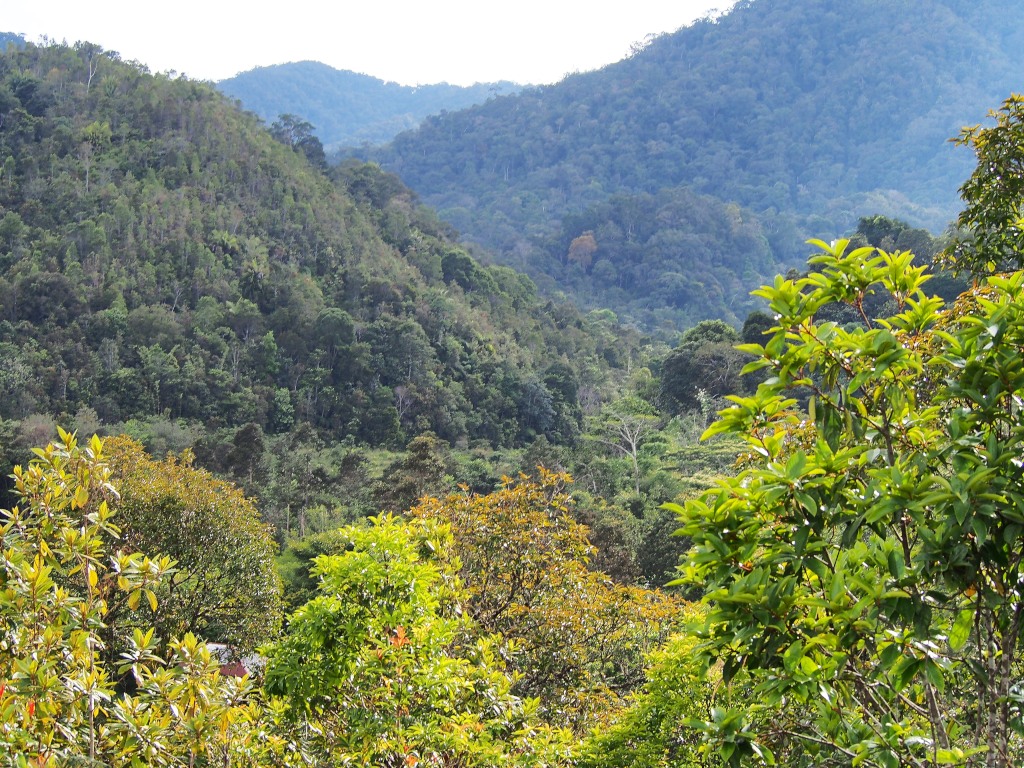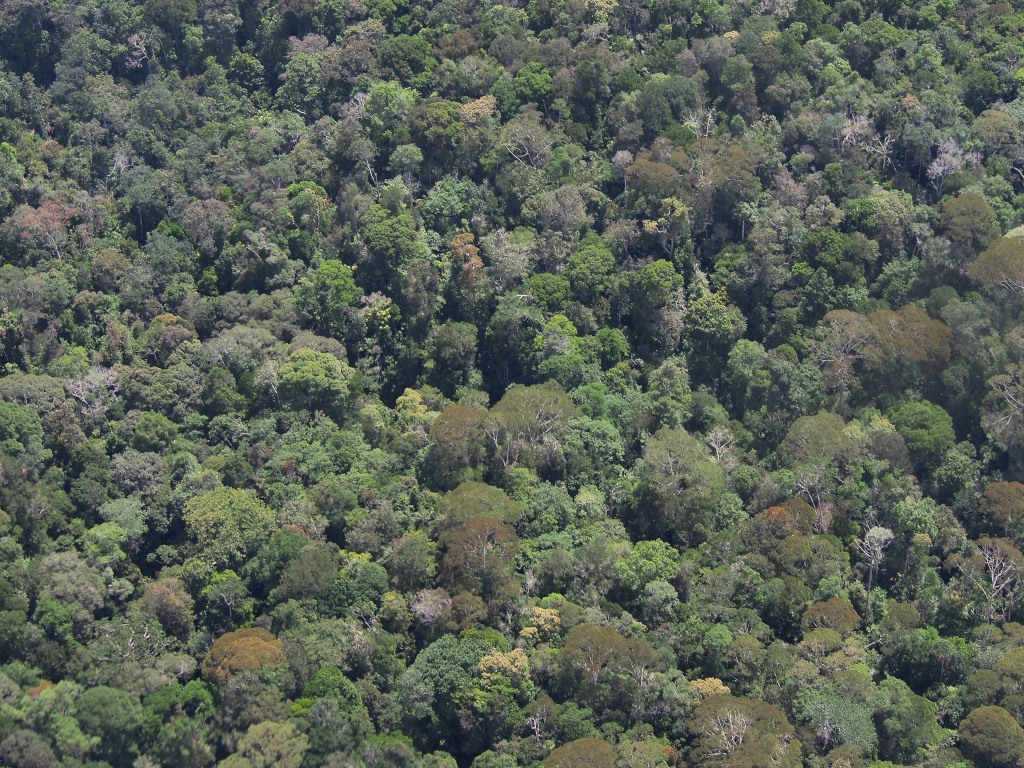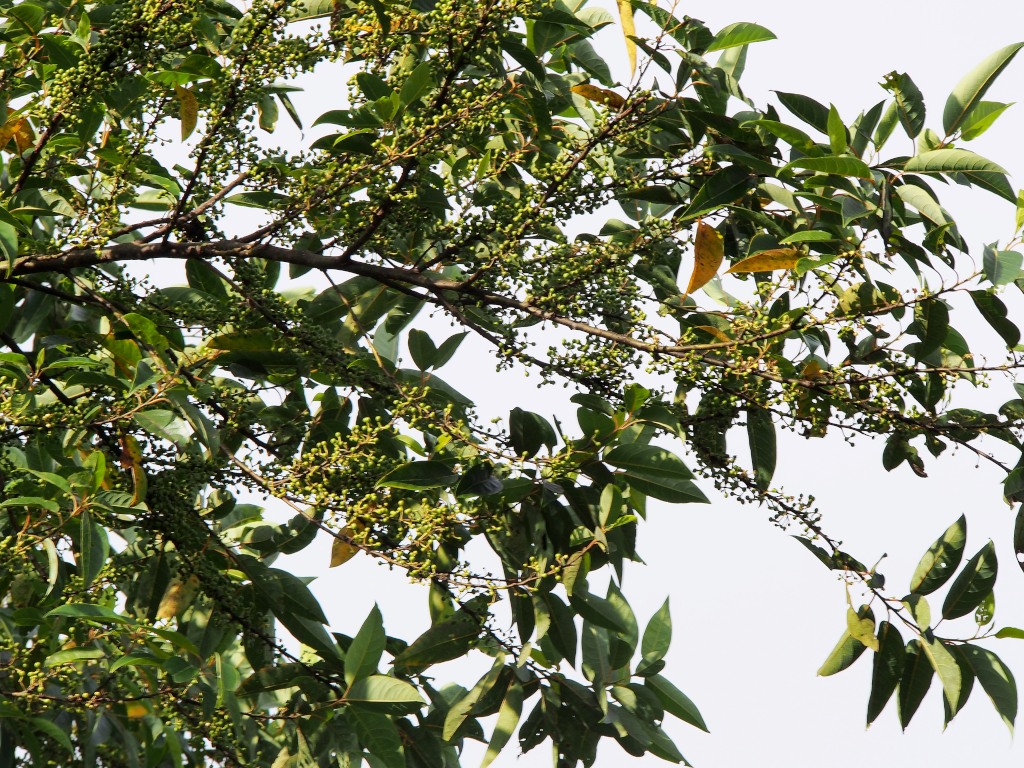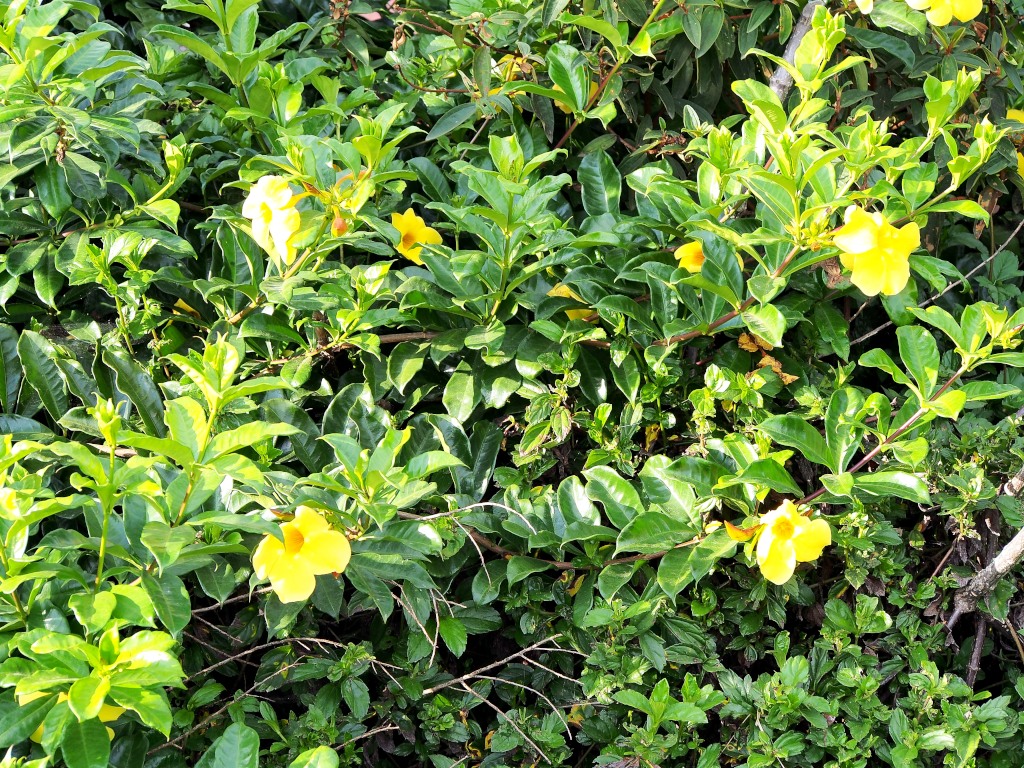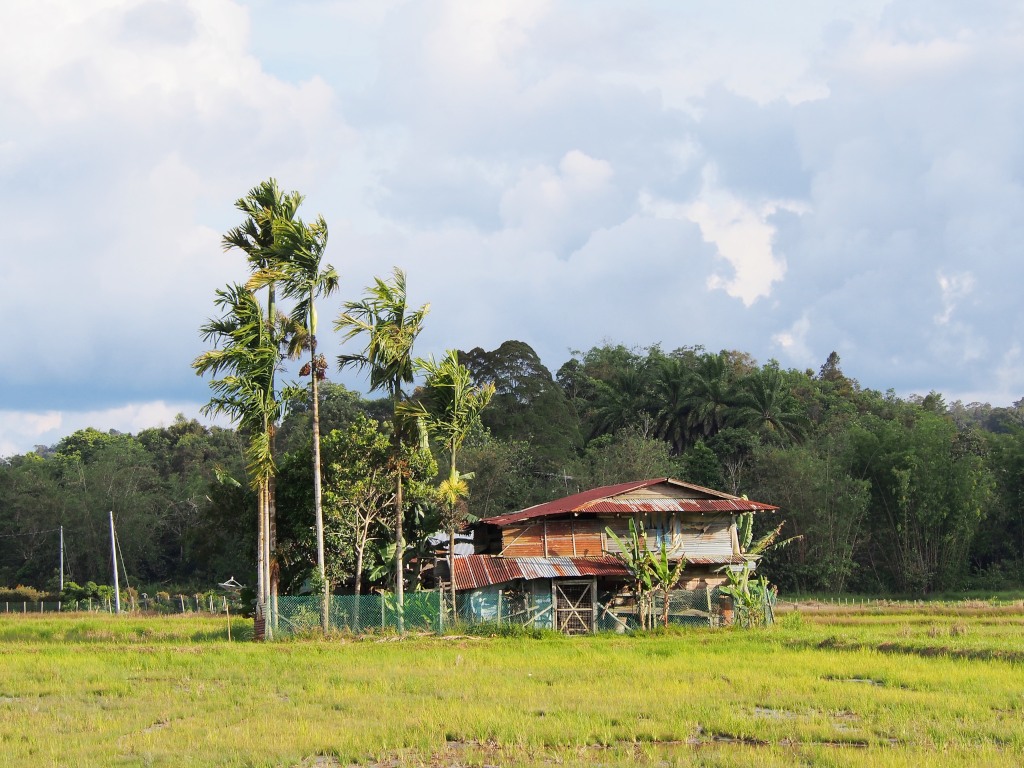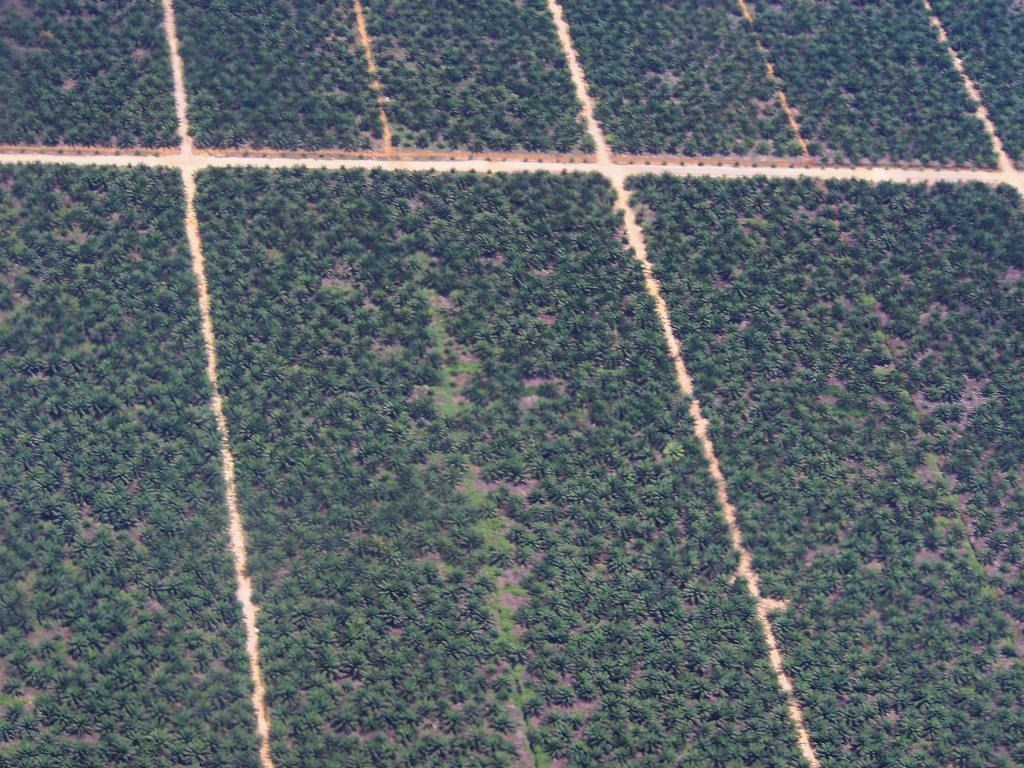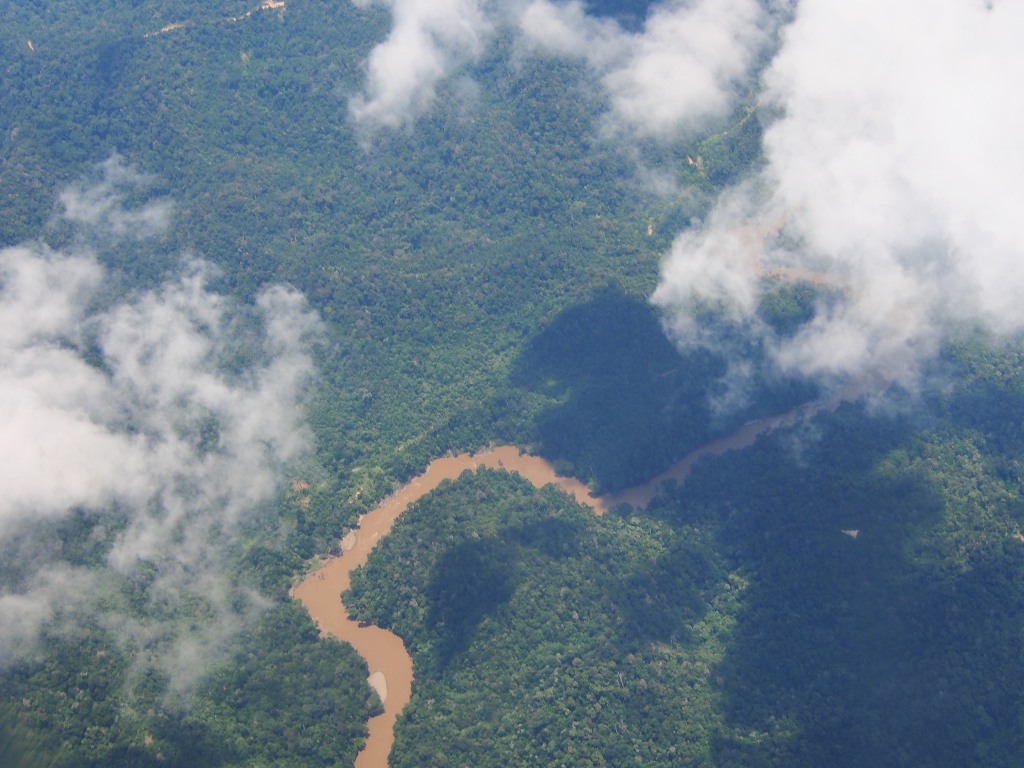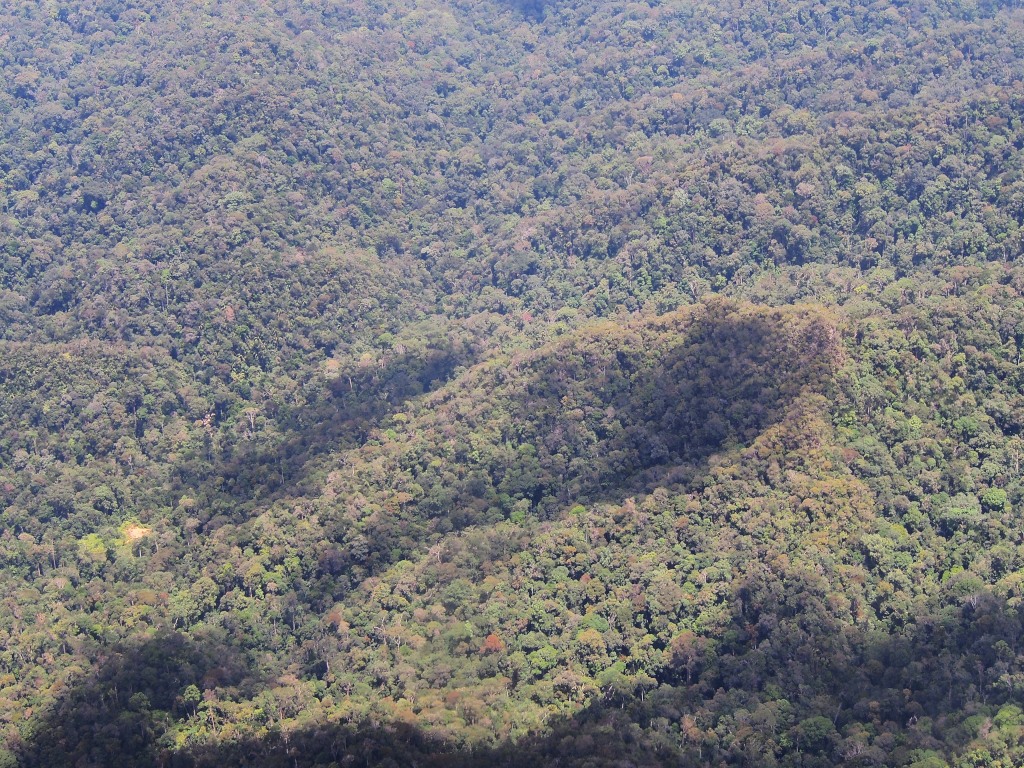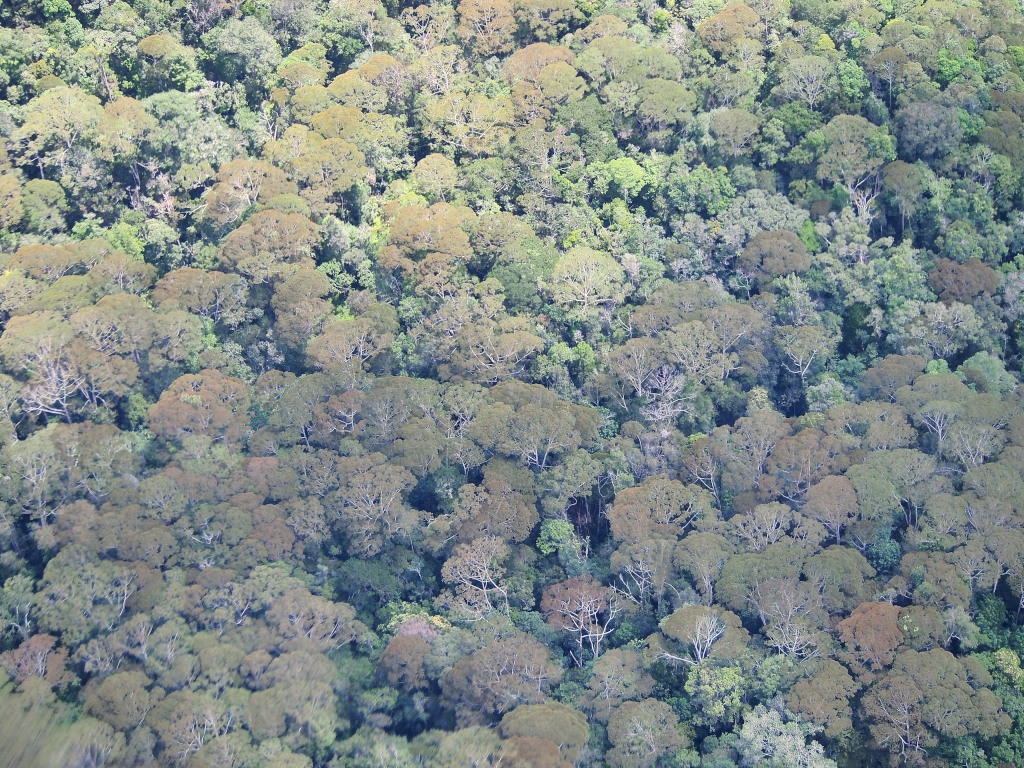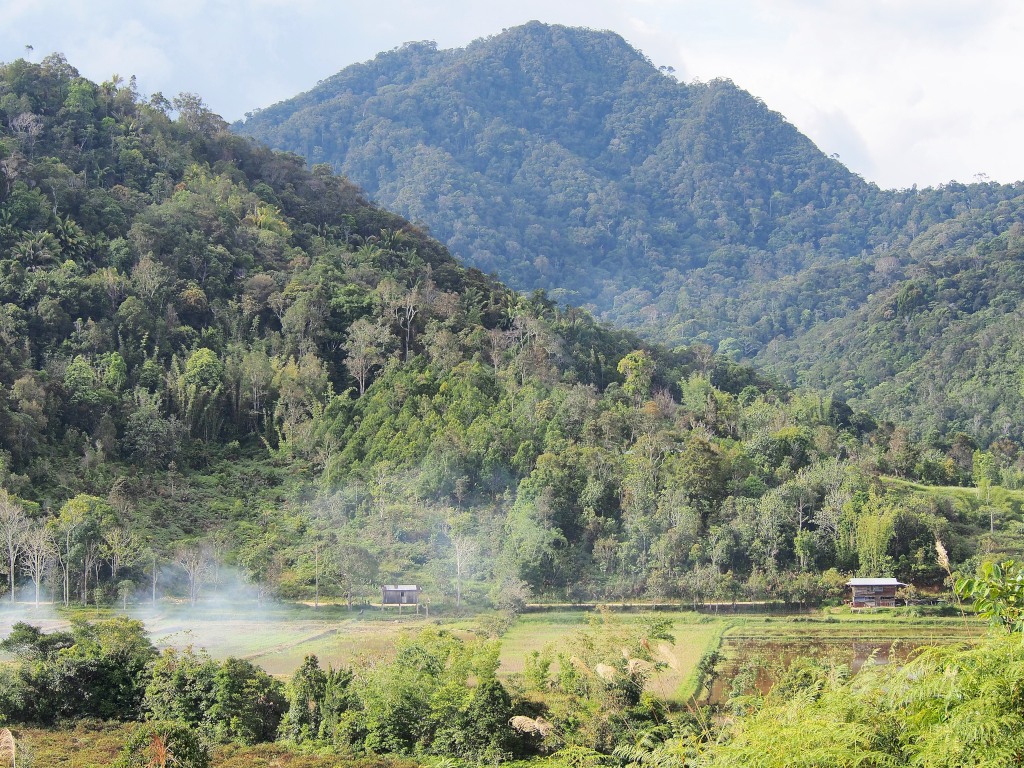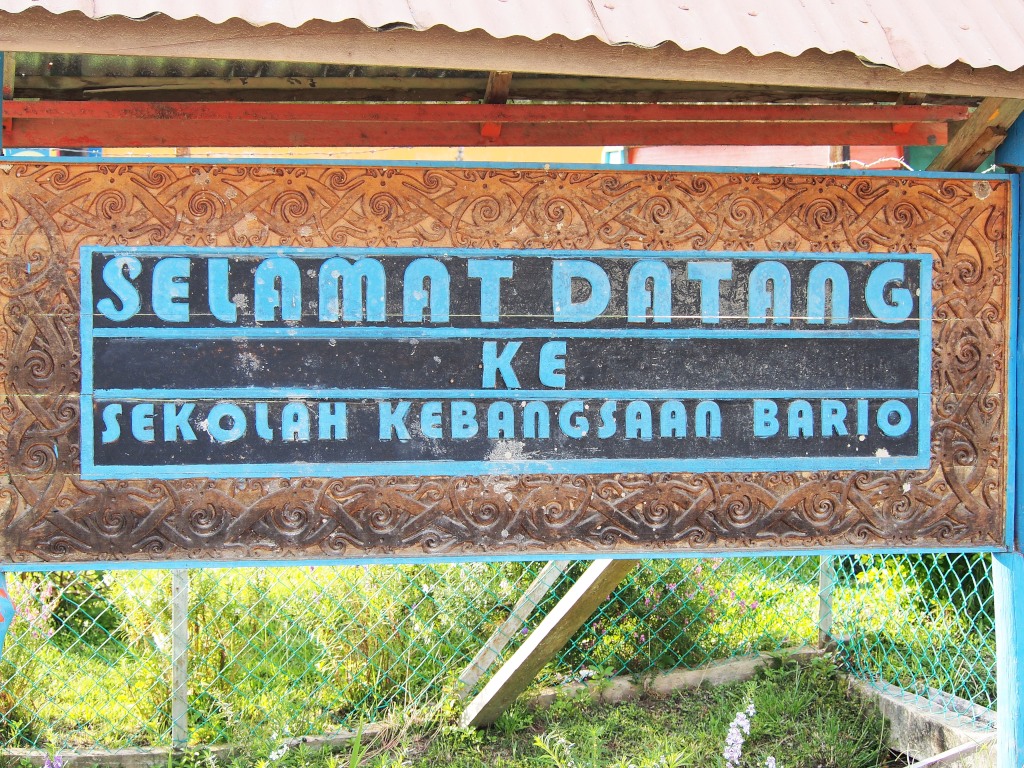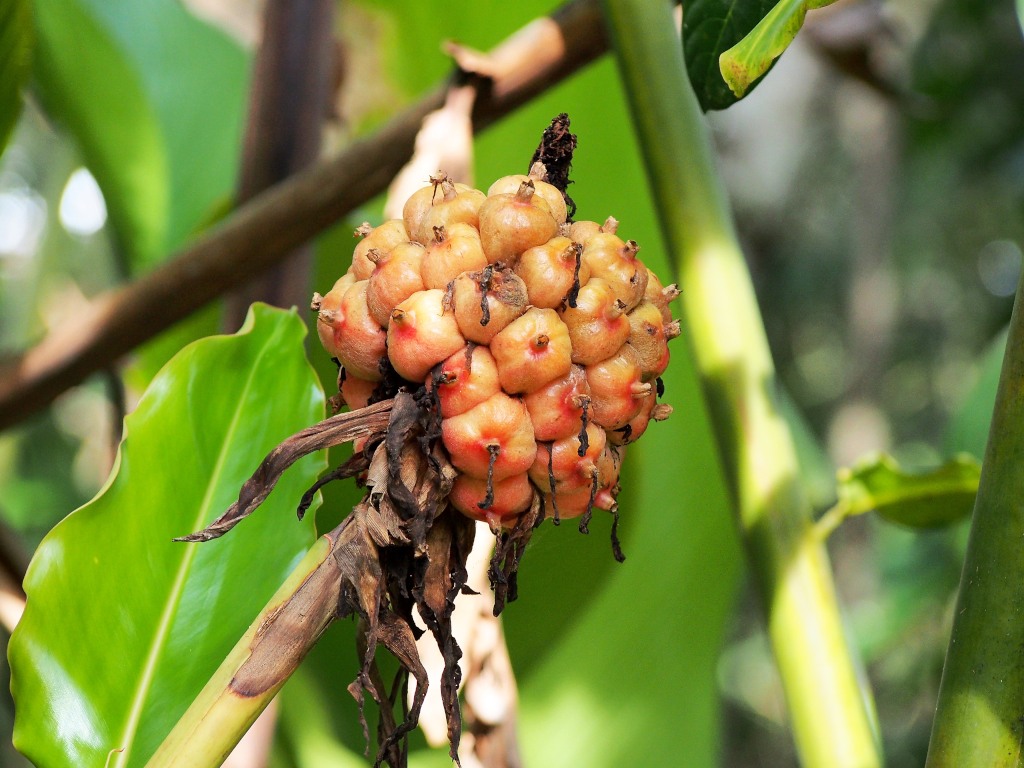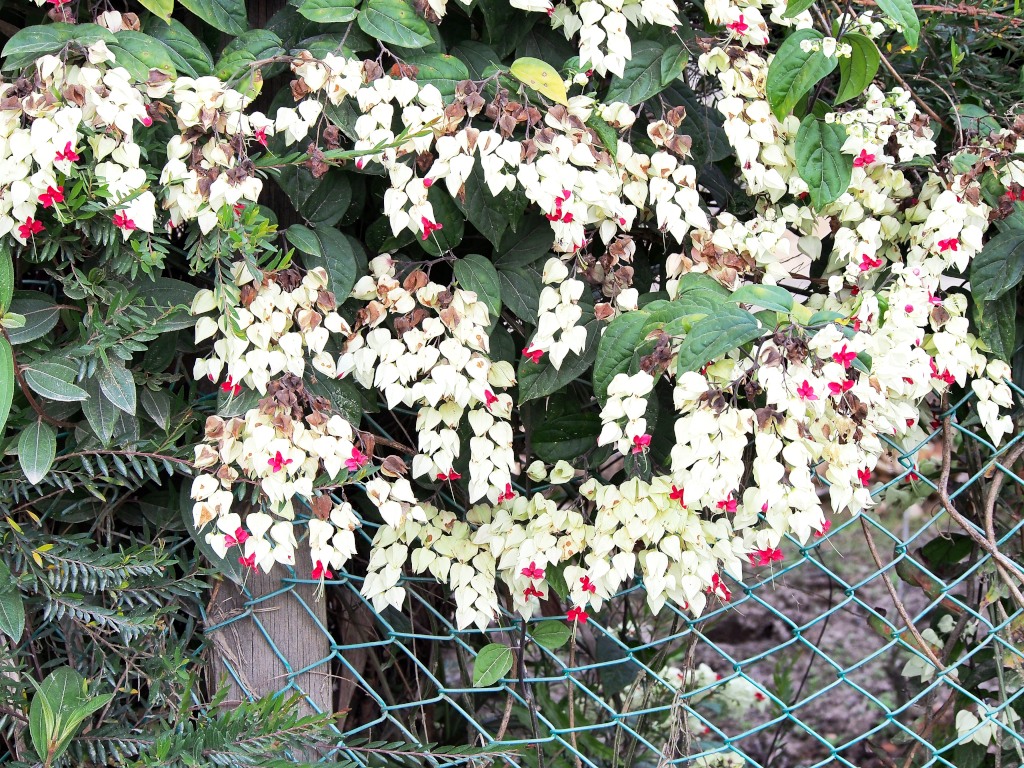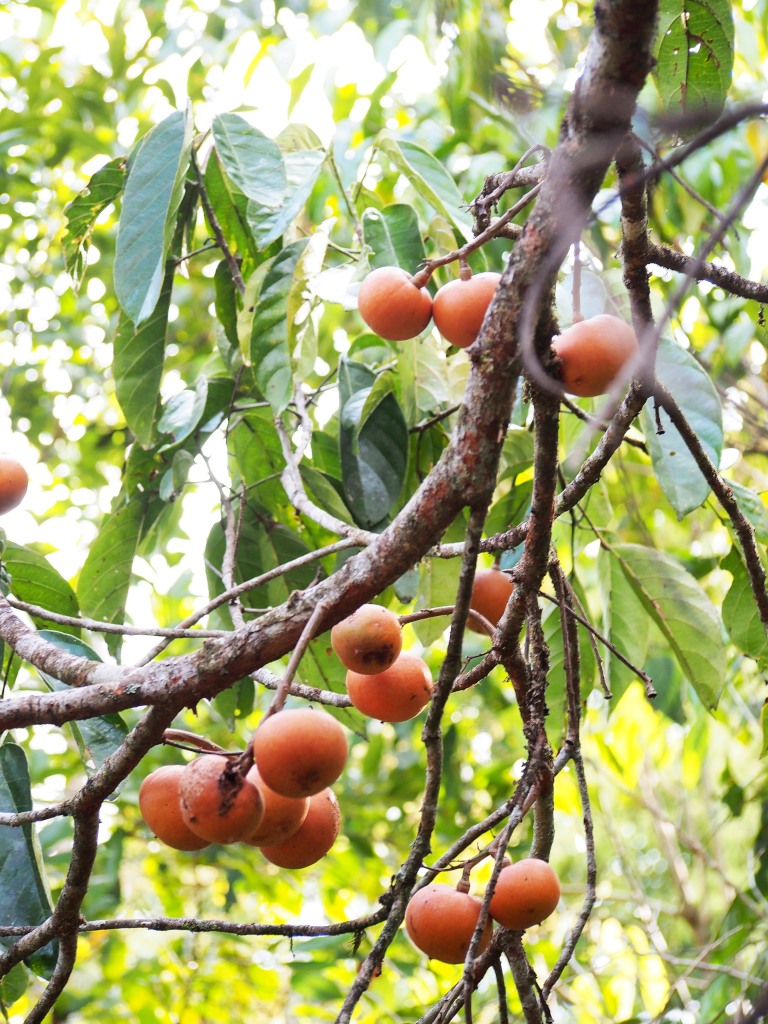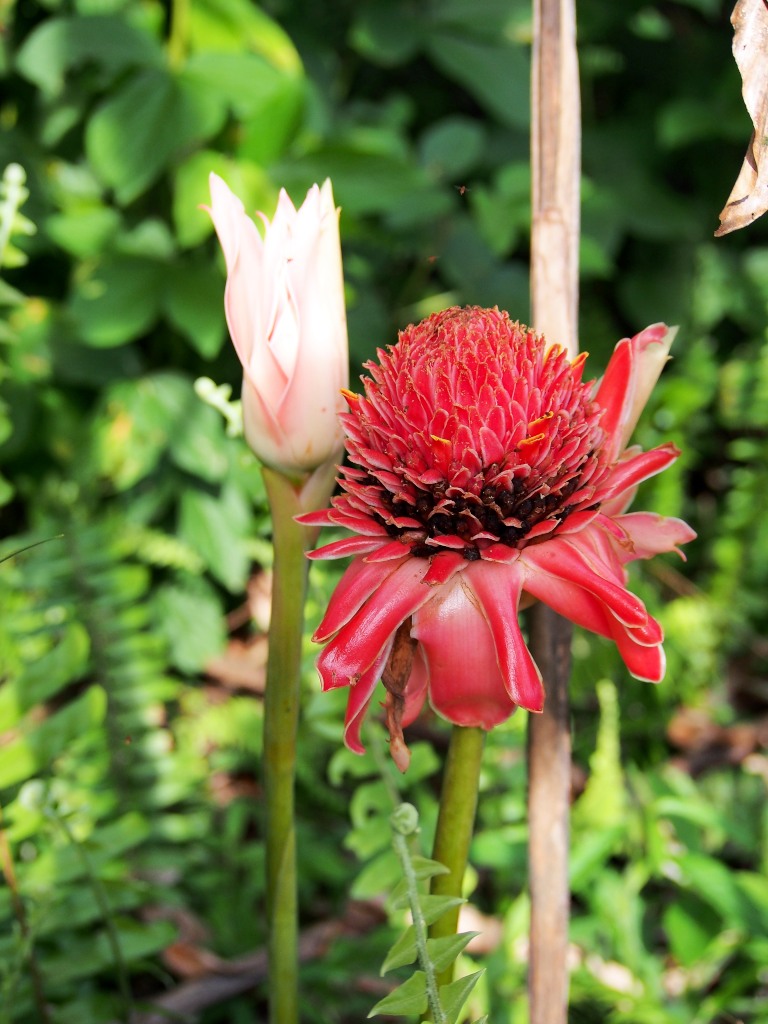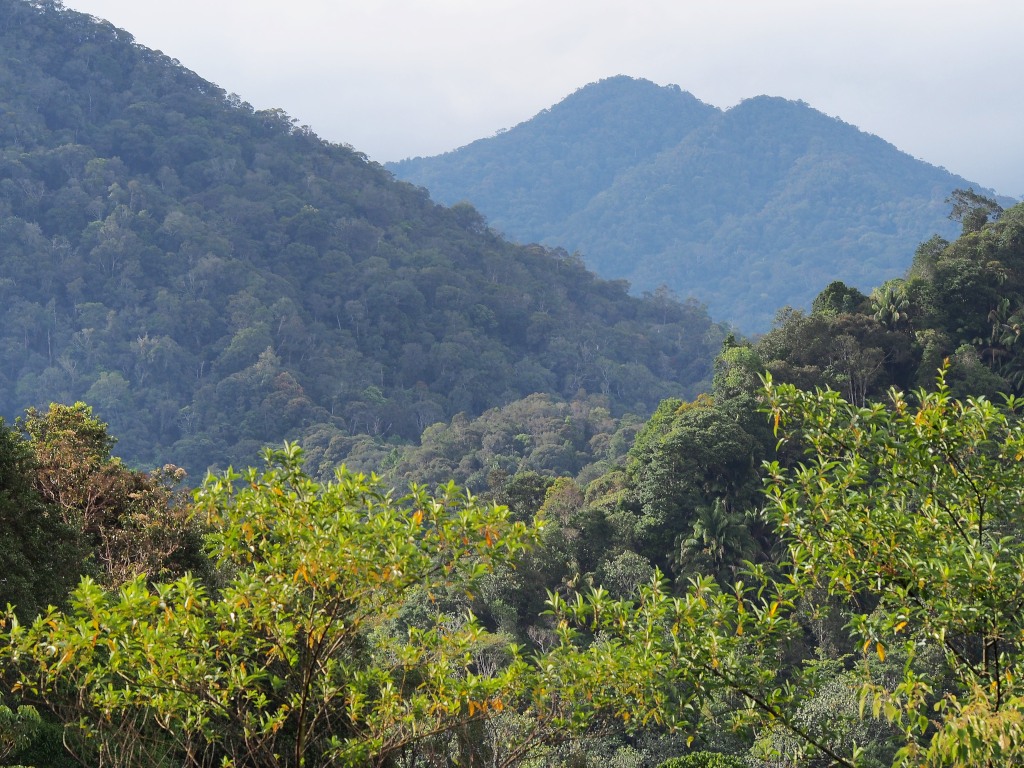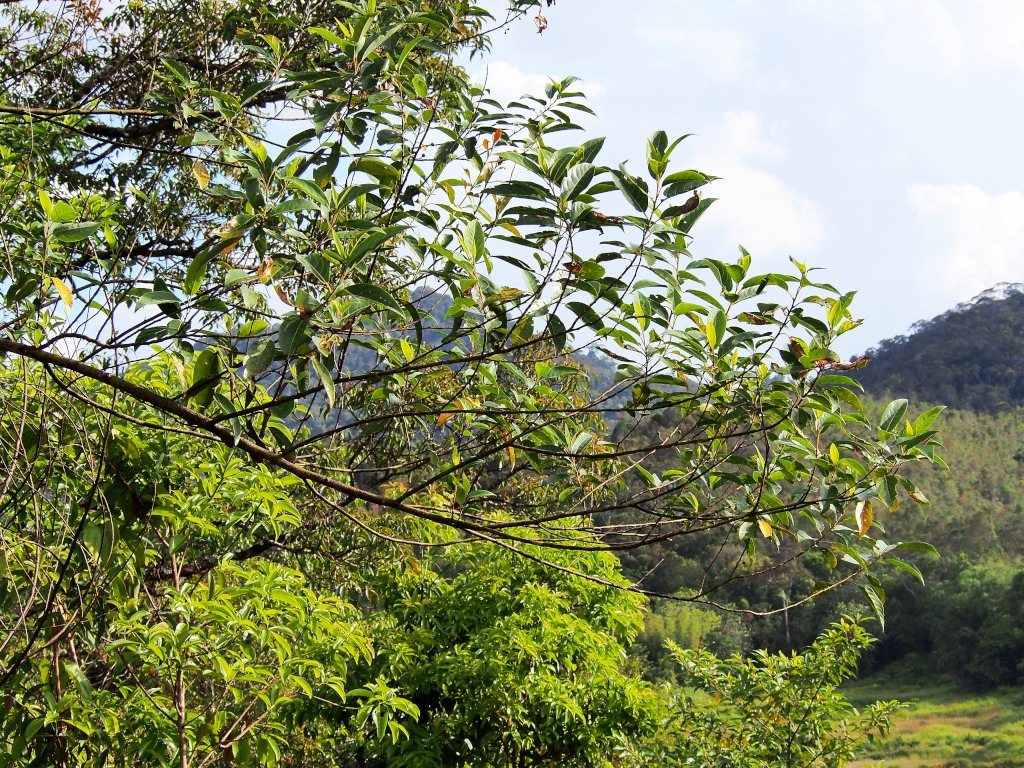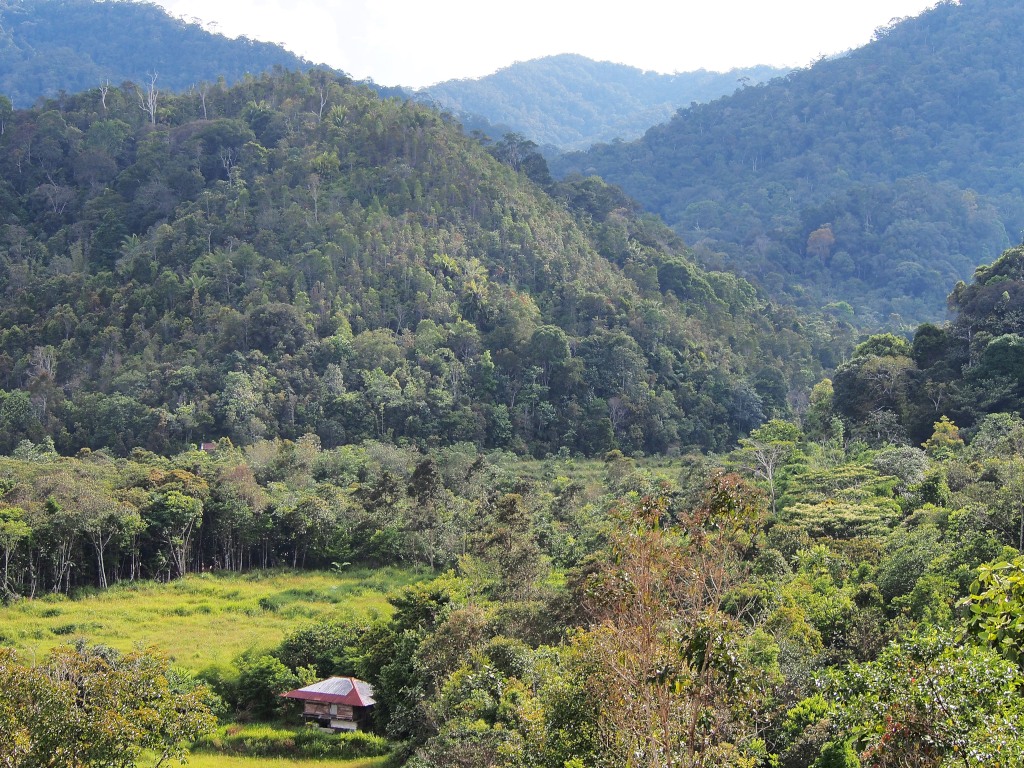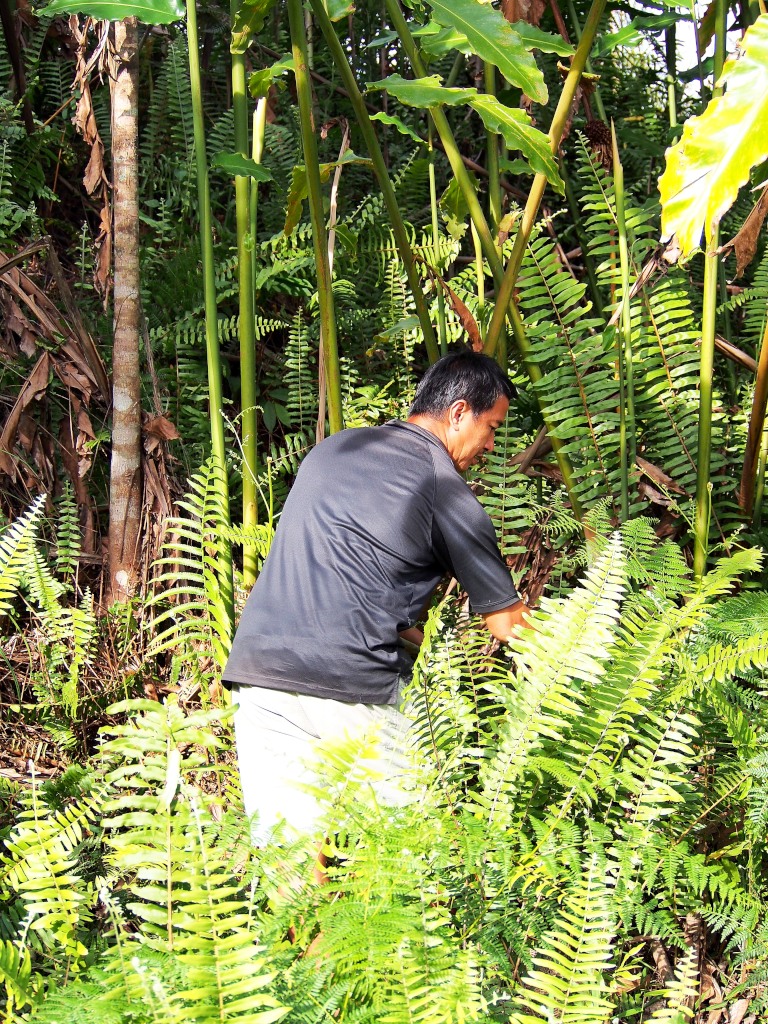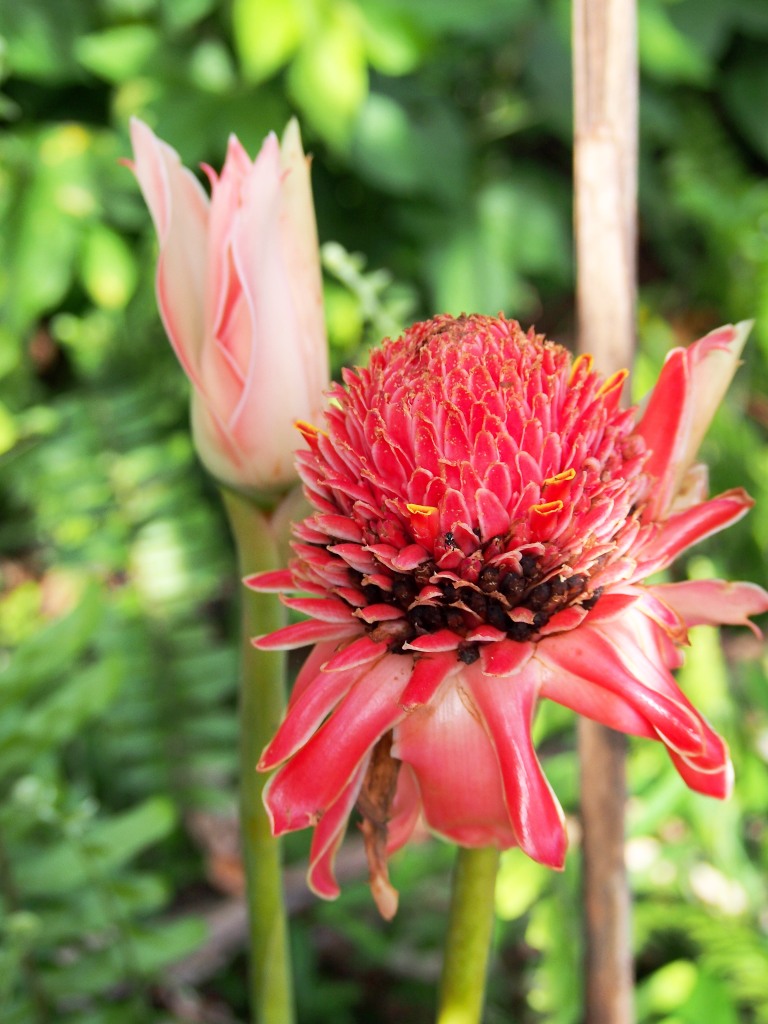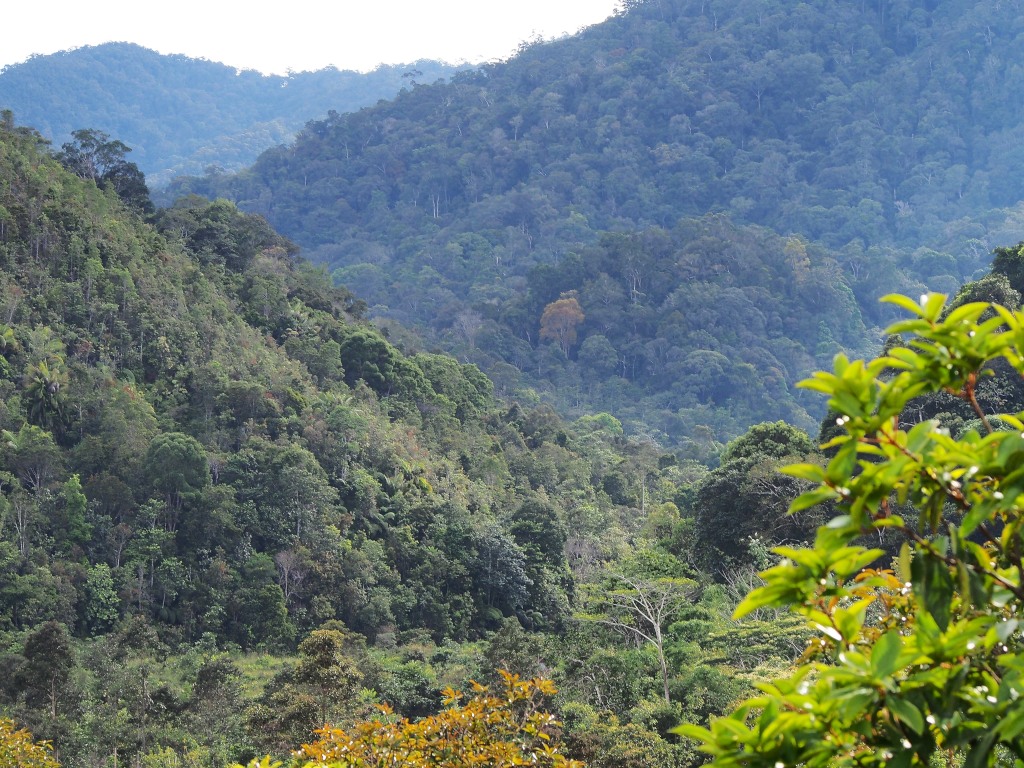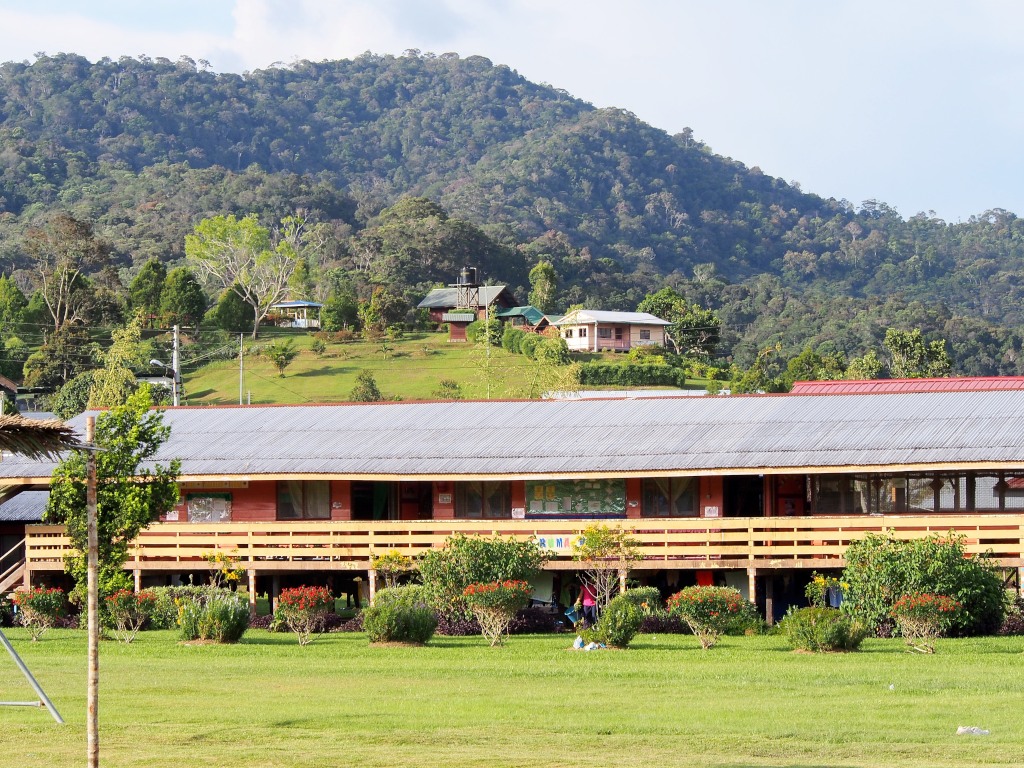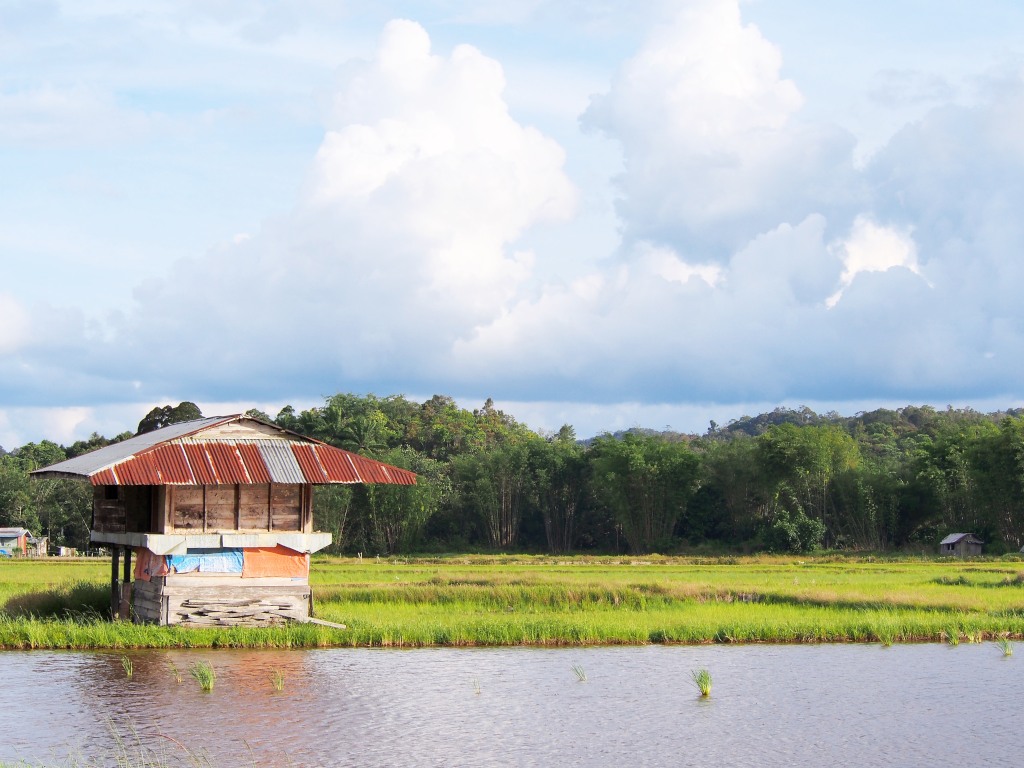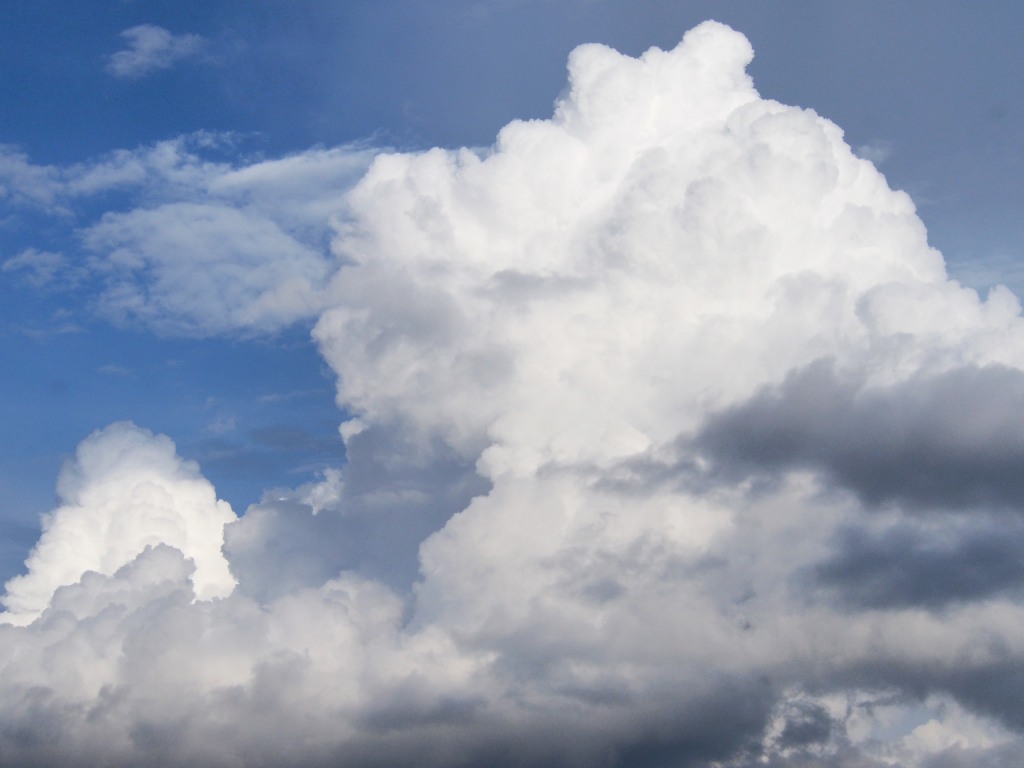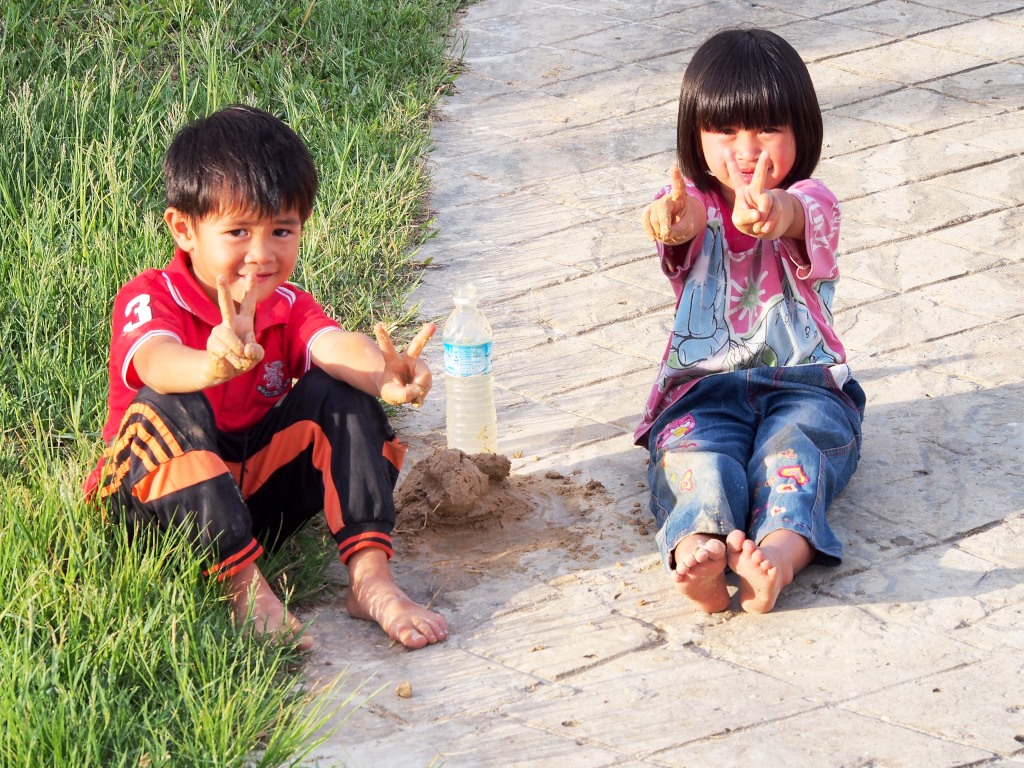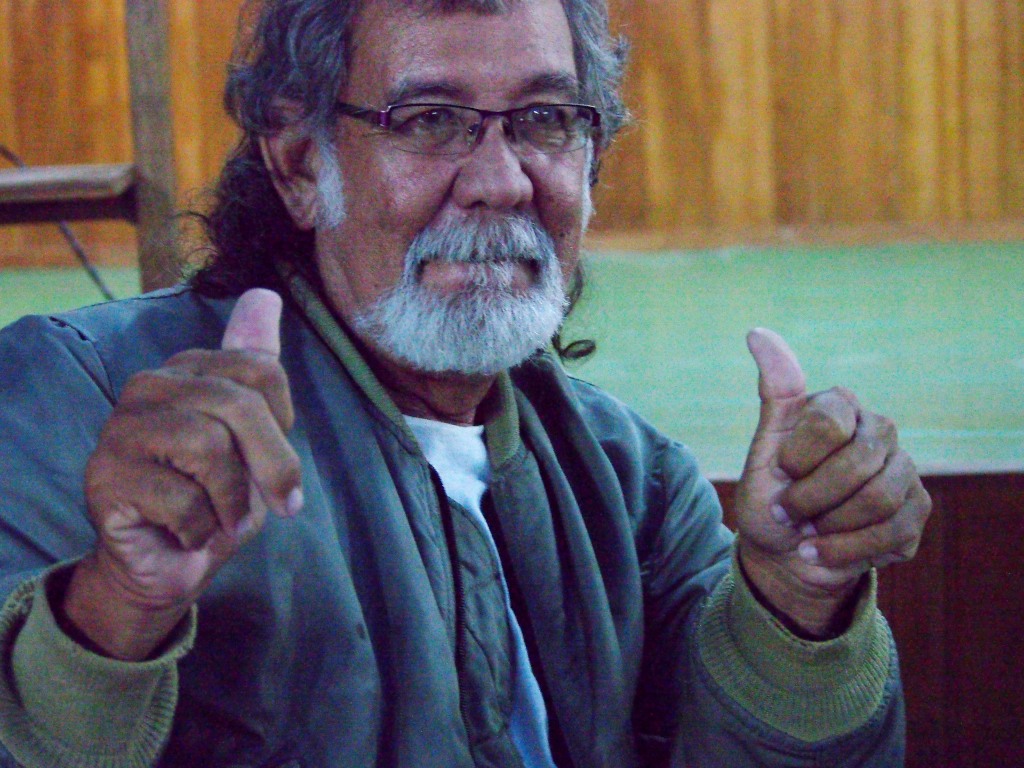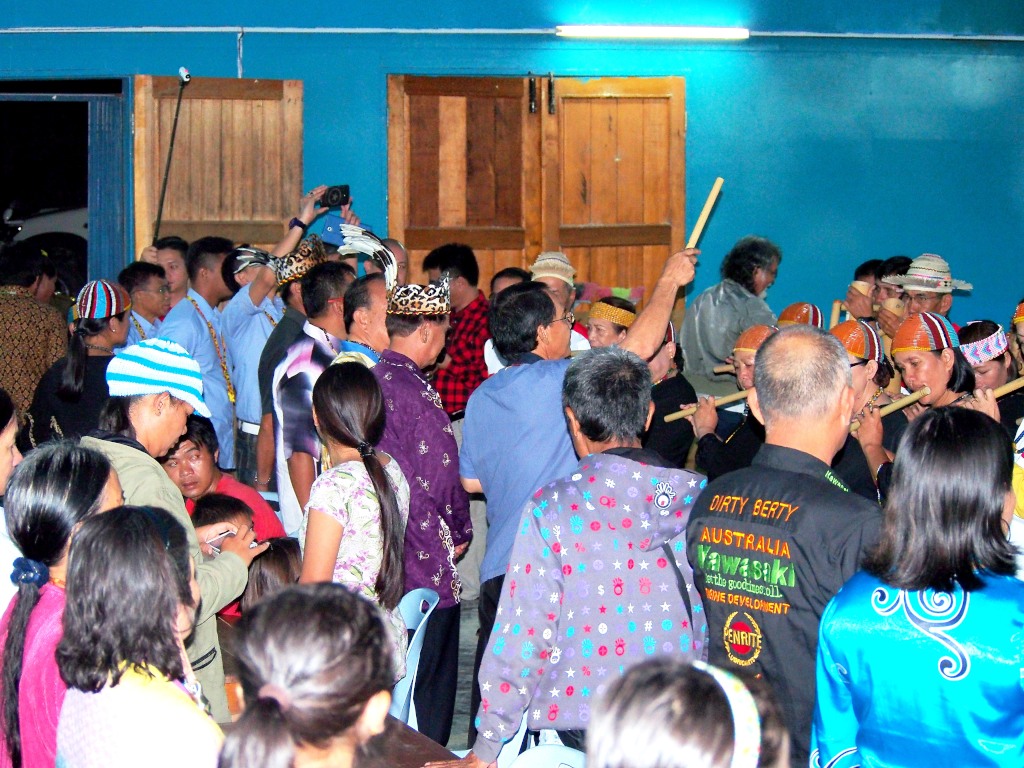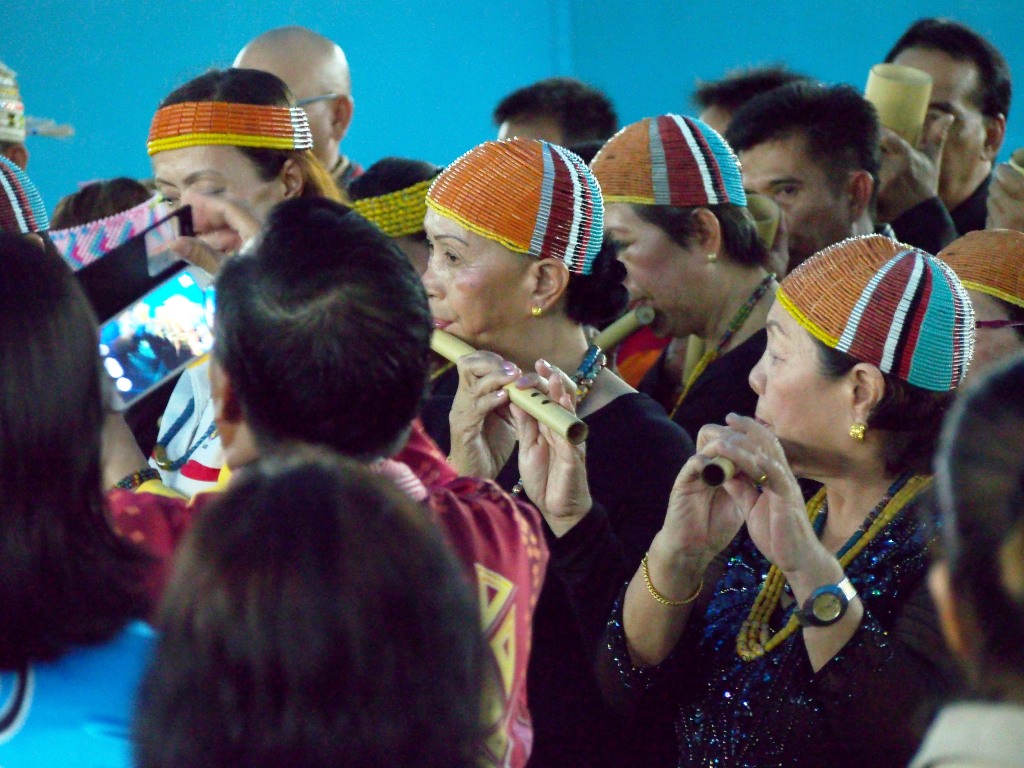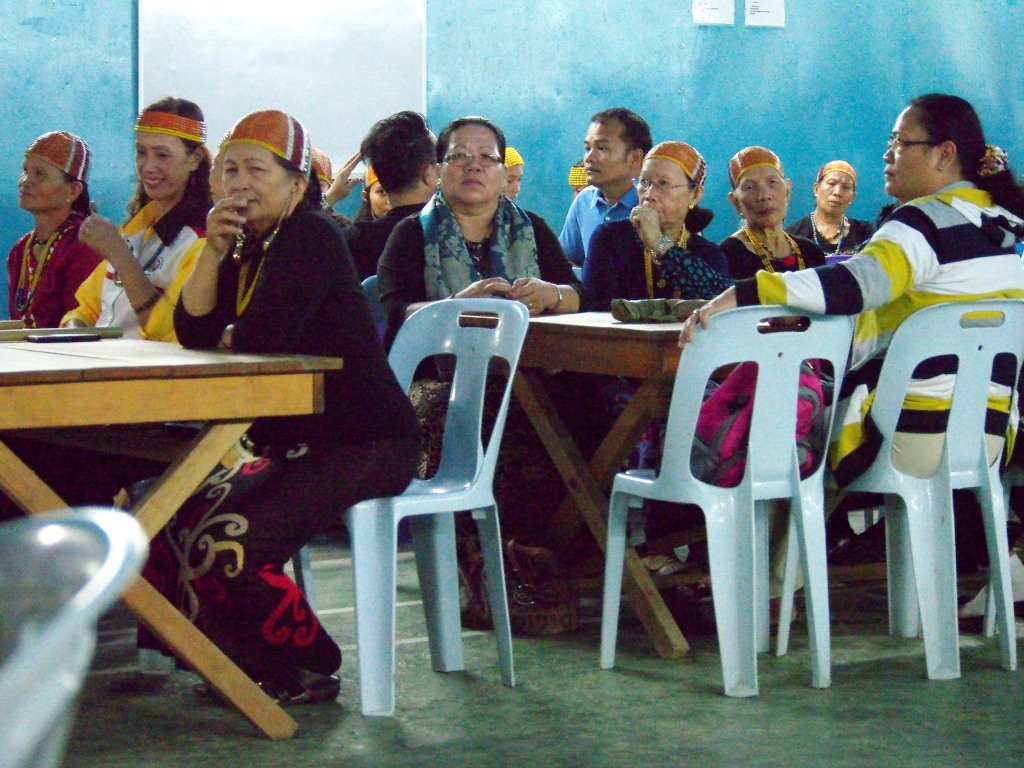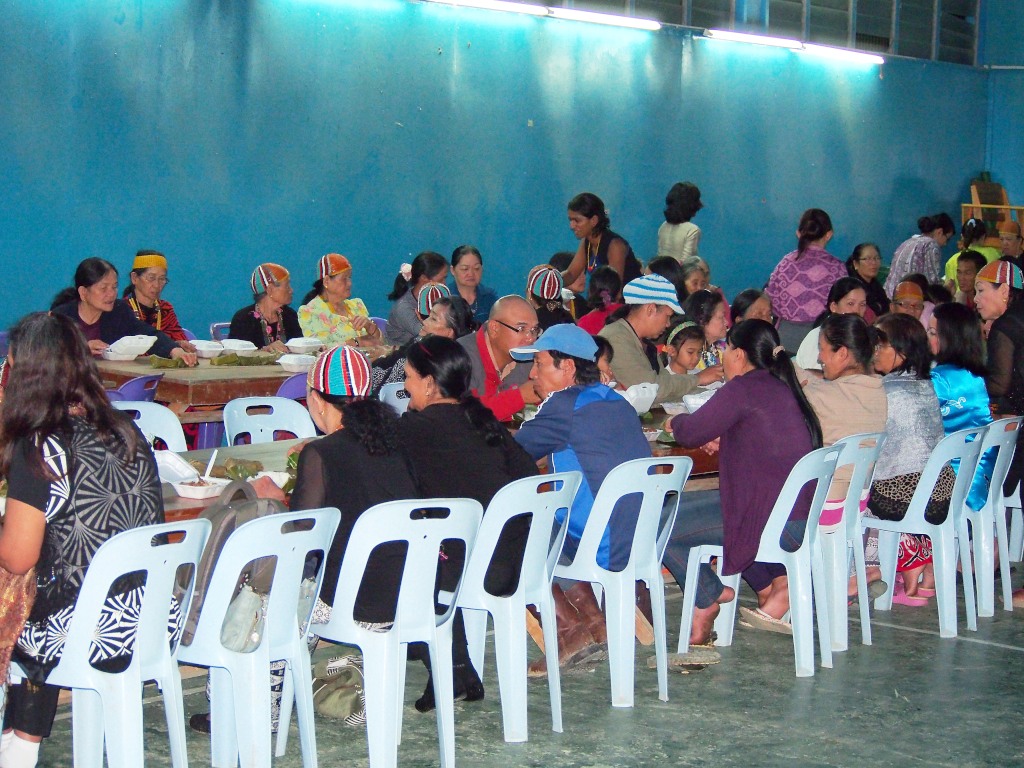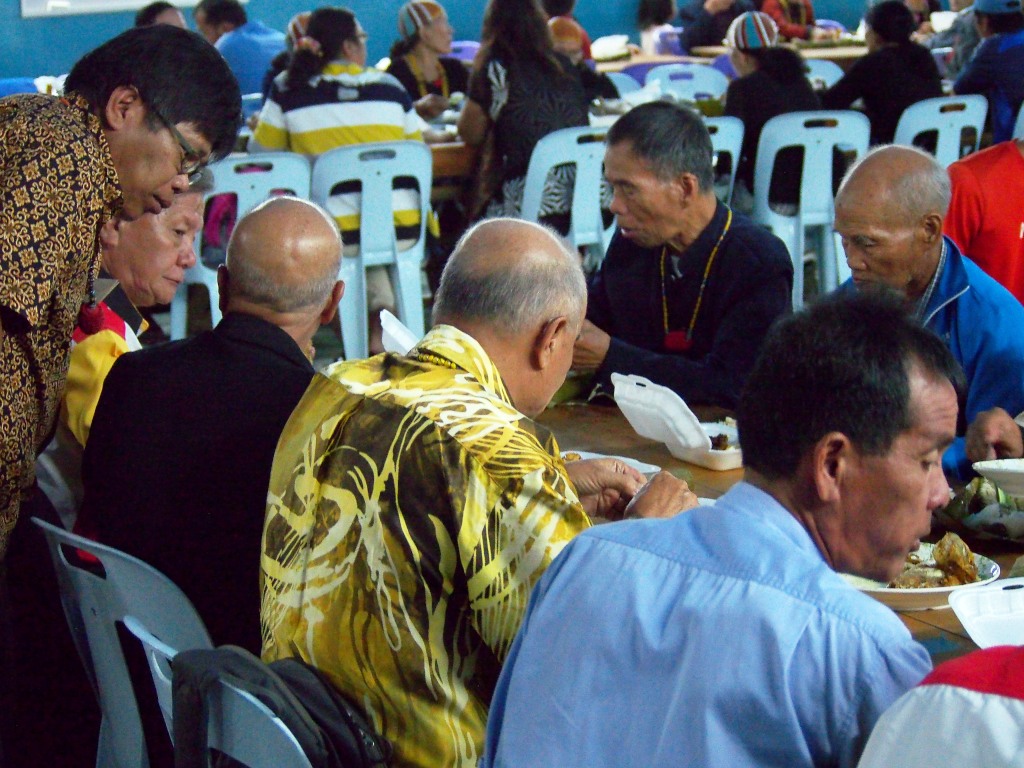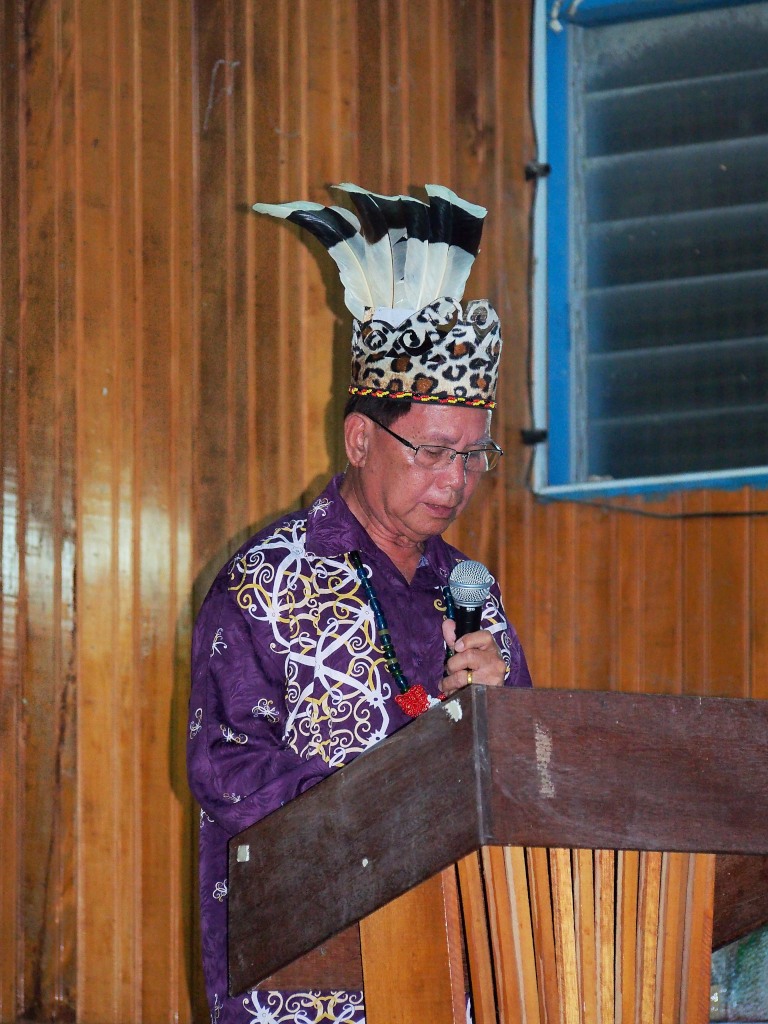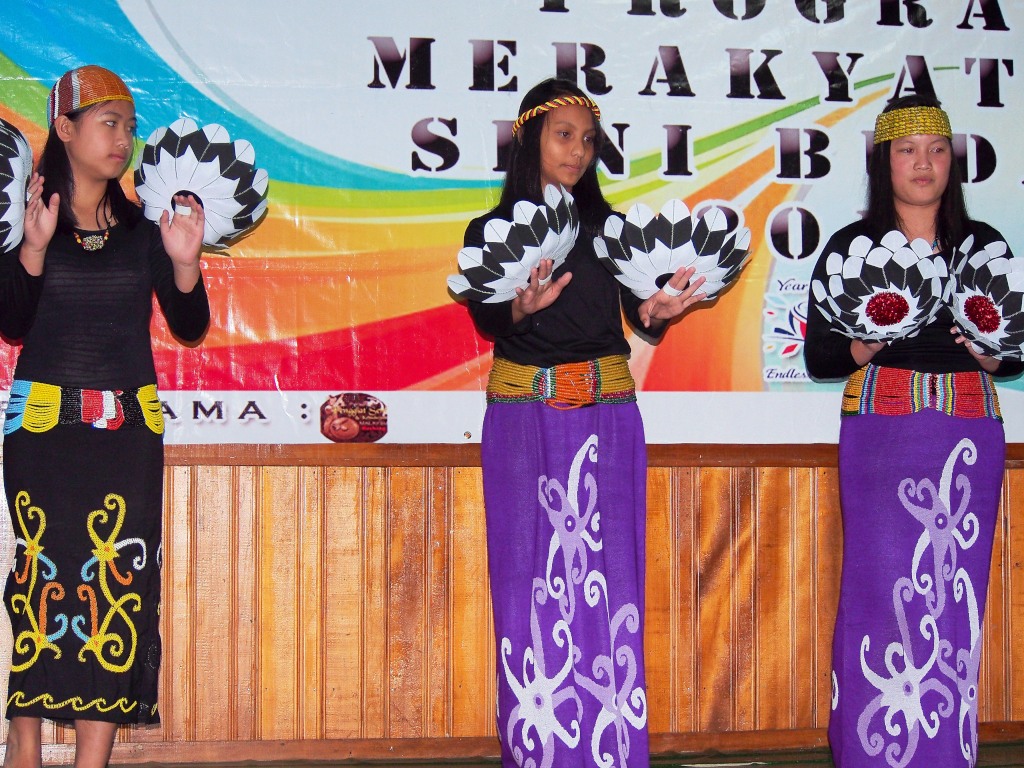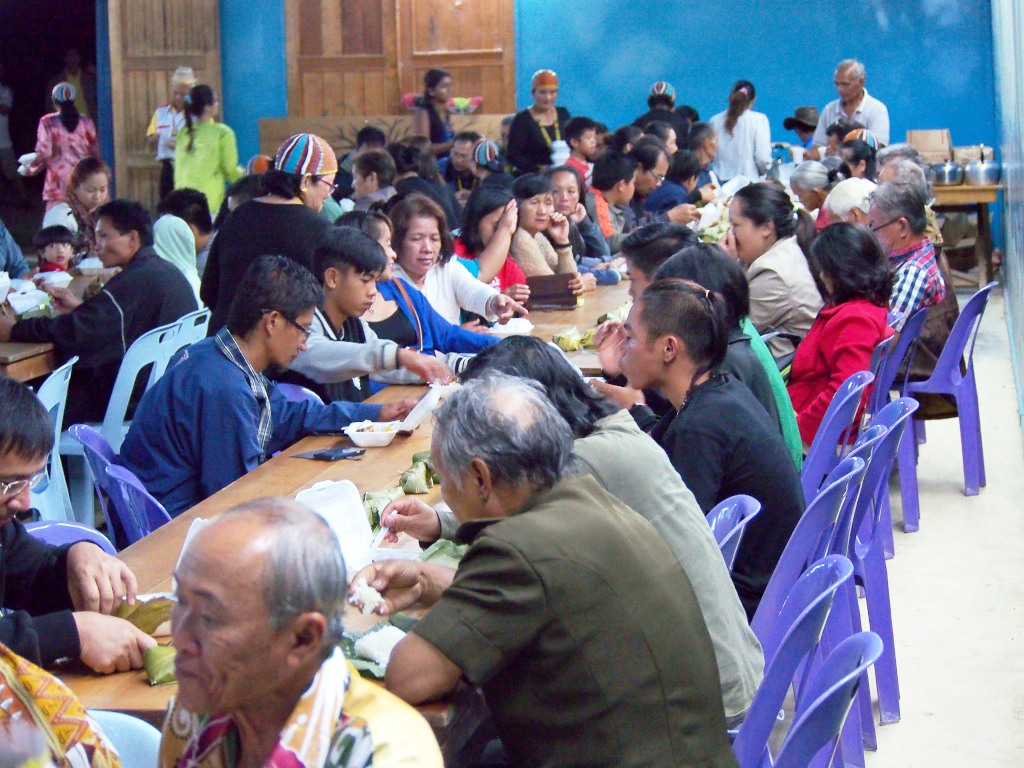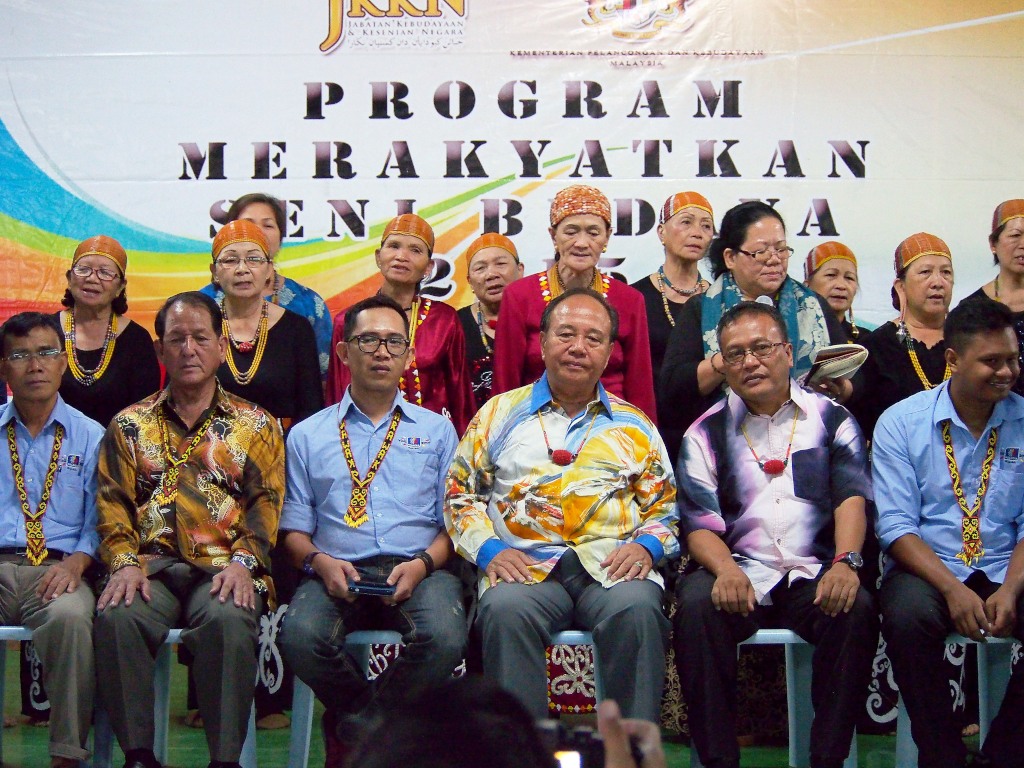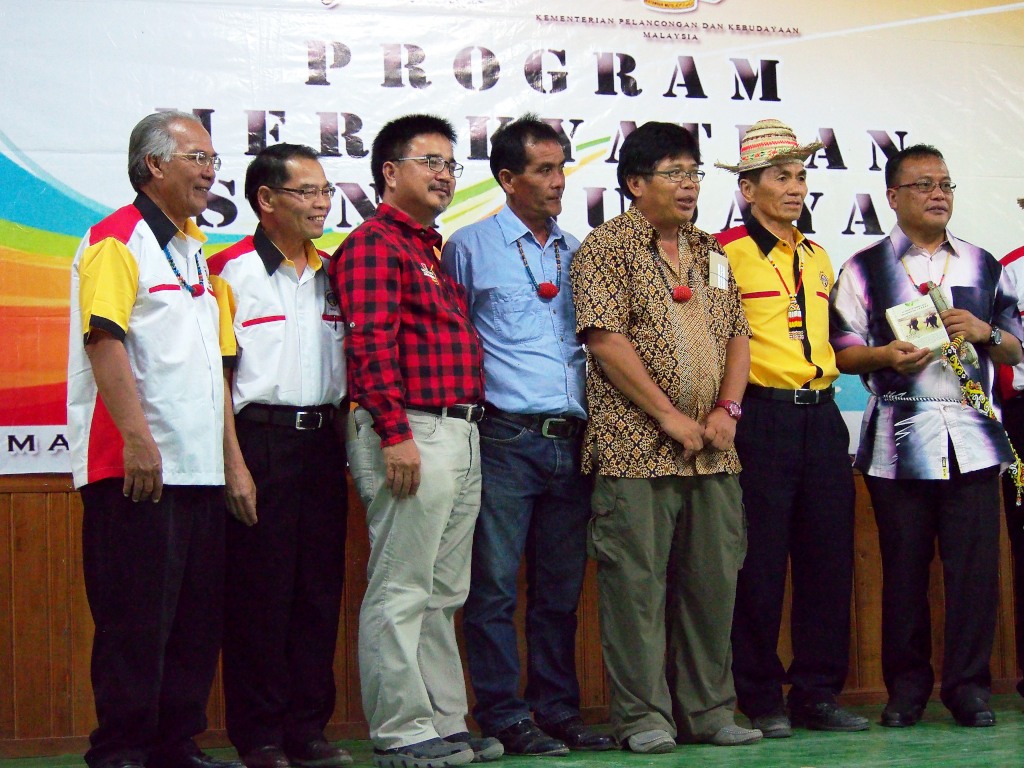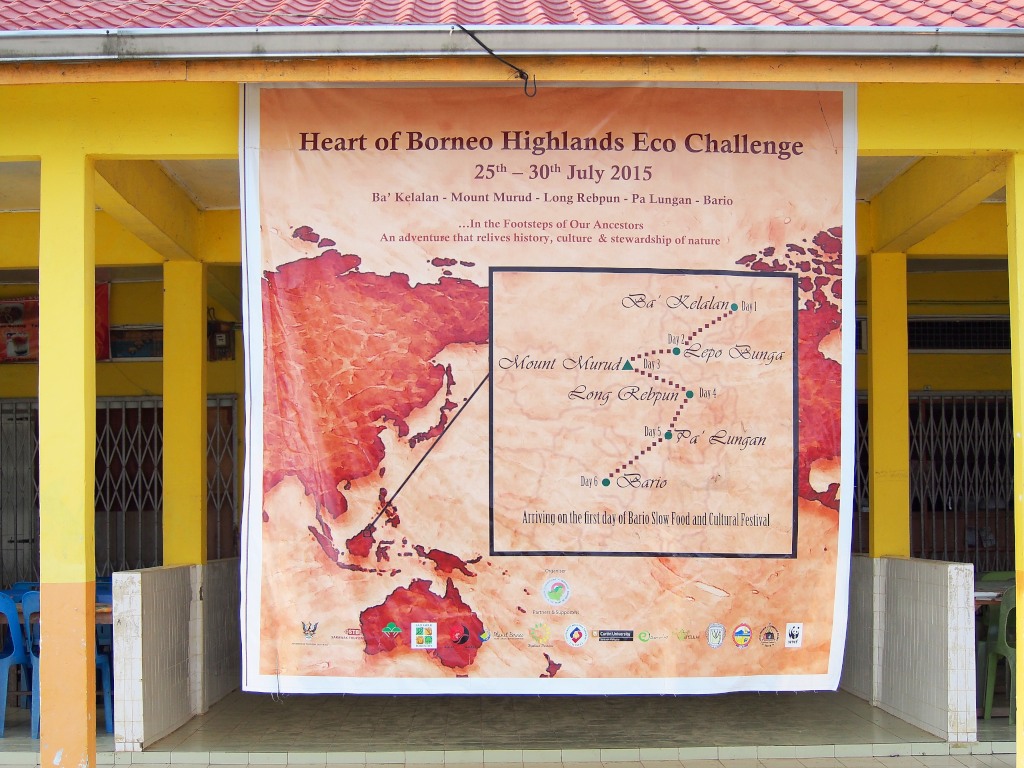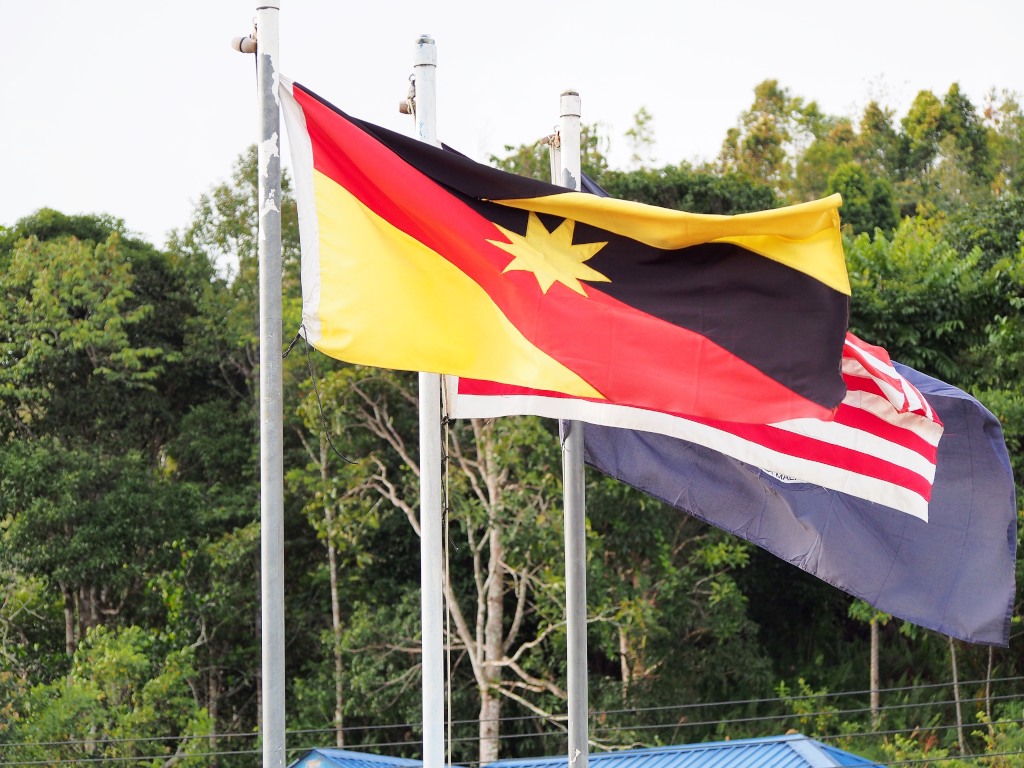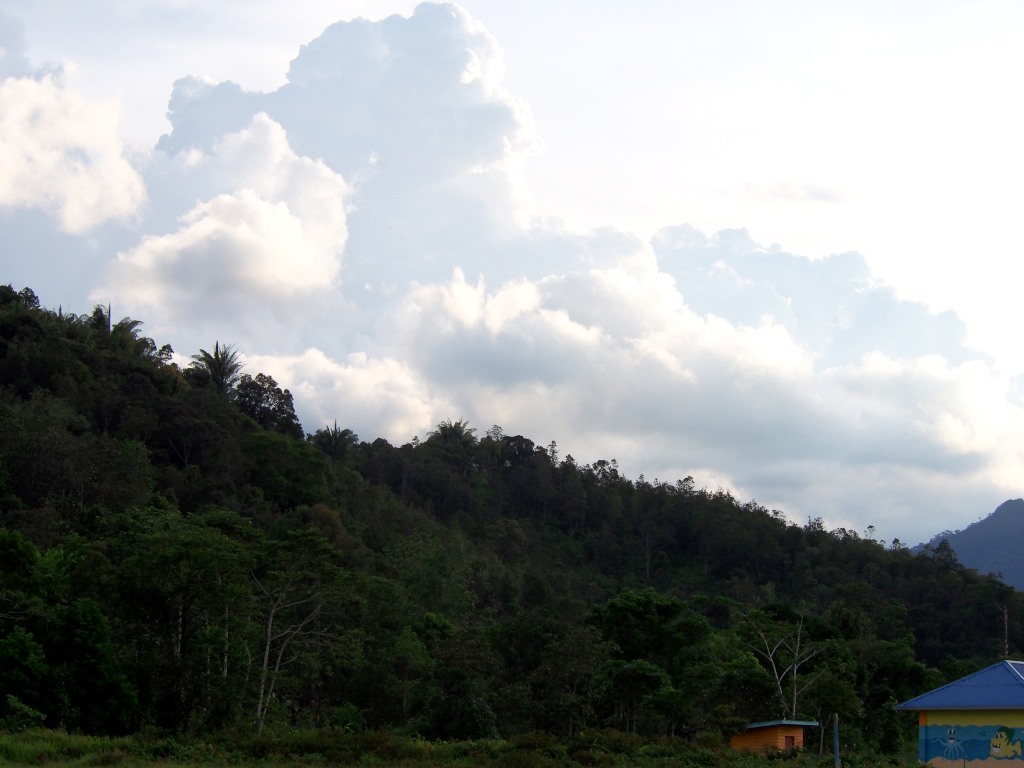May 9th, 2015
I wake up in the morning with enough time to spare, the room a complete mess, my main challenge for the day separating the core items I will be traveling to Bario with from those I will be leaving behind.
An interlude at a local eatery somewhere to the east of the Gloria for a tasty bubur ayam and laksa, hardly the most regrettable food you could be ingesting, although the laksas in Sarawak have consistently been coloured red and spiced with Chinese curry, which I am not a fan of. Small things matter, such as the preponderance of every manner of cold fruit drink and really fresh congee.
I get so distracted by my conversation with Hong in the lobby that I completely forget to return my key and check out, which will be a sure-fire way of racking up charges while I am gone. She rants on to me as she drives her tiny car to the airport, but with her limited grasp of English and apparently limited education, there probably isn’t much point going into too much detail with her.
She offers to keep my backpack for the time I am gone, which I am somewhat skeptical about, considering I have no intention of staying at the Dillenia guest house that she is based out of, irrespective of how relatively overpriced the budget hotels in the centre may be.
I would like to try the Residence 21 again when I return to Miri, as I just can’t imagine their internet not working indefinitely.
The young Malay women working at the MASWings check-in are happy to see me again, although happiness is a fairly common state with locals. This time I manage to feed my baggage through the security scanner without issue, although the headscarved uniformed woman attending the machine seems more interested in her cell phone screen than the machine monitor.
One of the locals loitering around the counters turns out to be a law enforcement officer returning from a tribal community in the bush, the locale too insignificant to justify an independent policing staff. Upstairs, a handful of people wait for various flights, some to remote villages and others to the larger cities in Borneo as well as the mainland.
The Viking DHT-400 to Bario is a small twin propeller craft with some ten pairs of seats on one side and a single column on the other side of the narrow aisle. Even with its small size it is only a third full, one group of passengers young Malaysians and the other a few officious-looking older men, including a gregarious European with a thick mop of grey hair and the appearance of an aging Bruno Gerussi from Beachcombers. Remember that show?
And it turns out the community I am flying to may as well be a latter-day Sunshine Coast village the television show featured some four decades ago. The pilot expertly flies the small craft around the periphery of the cloud banks piled high around us, the few times we dive in the plane begins rocking heavily, a reminder as to how unstable small craft are.
The linear grid of oil palm plantations gives way to rising escarpments and hillsides, now covered entirely with untouched rainforests, something I would have considered almost unthinkable before, and is certainly very encouraging to see.
Bario airport is an immensely laid-back affair. For some reason a group of traditionally-costumed older men greet the passengers that disembark. Something tells me they are here to greet the men who were sitting in the back of the plane, dignitaries of some sort. But no home stay representatives throw themselves on me or even seem to make much of an effort to meet me, for reasons I will see later on – namely, that life is far too unhurried in Bario for anyone to try too hard at anything.
Some of the youth that were on the plane tell me they are volunteering for a community-based project to improve the English skills of local women, giving them increased opportunities to interact with and profit from tourists. They suggest that I could stay at their long house, which I suppose I could, but perhaps I could also wander into the village myself and see what choices there are.
Trudging along the red dirt road, the huge blue-ceramic cumulus clouds pile up along the low verdant hills, a bucolic vision of peace in this remote enclave. A truck driven by the local who had briefly approached me earlier with the young volunteer group stops and offers me a ride to their longhouse, which I suppose could act as a starting point for looking for the appropriate accommodation.
The place I am brought to looks as ramshackle from the outside as it is actually quite homey and presentable inside, a long table and open air stove the center of the common area. The guest rooms seem to be located at the end of a carpeted hallway. The structure is clad in raw wood, the floors of the rooms carpeted, beds and dressers in a dowdy but eminently comfortable style.
73 RM nightly for room and board is hardly a terrible deal, and so without further ado, I will chose the room with the queen size bed and gaily-patterned duvet, almost luxurious by any standard I would have recently experienced in my short stay in the country.
The protagonist at the Sinah Rang Lemulun homestay seems to be Julian, the easy-going youngish man that picked up the group at the airport. The home stay was initiated by his mother many years ago and is the oldest of its kind in the village, although now a number of other villagers also have home stay projects, although this one is the most storied. Sina Rang is also one of the most well known artisans in the community.
Addressing the confusion as to his mother’s name, he explains that her name would have changed with the coming of her first child, and again with the advent of her first grandchild.
Julian worked in Kuala Lumpur for 21 years as machining engineer in the Shah Ahlam area, when he decided to come back home at the request of his mother. His brother and two sisters have all moved away from Bario, and have no intention of moving back and working on the farm, so he is the only one left in the clan to take care of the family land. He also maintains a land-based tilapia farm in the area of Seremban in Western Malaysia.
Some of the community members feed a hornbill perched on the sill of an open window, the bird having apparently been found abandoned when it was young and adopted by the longhouse. It is free to fly wherever it wants to, but returns regularly to be fed.
The life of the longhouse unfolds before me as the respective families focus on their individual compounds, but also intermingle to some extent, breaching that delicate northern prerequisite of privacy. Julian points out that the longhouse represents an extended family.
The town of Bario was founded from the resettling of communities deeper in the forest, who wanted to be closer to the service and infrastructure that the colonial administration and later Malaysian government could offer.
He points to the sections down the long hallway, telling me that we are in the kitchen, which I don’t quite understand – is this one long kitchen, or does each party living in the long house have its own kitchen?
I pass through a narrow passage to the far side which houses the apparent living room, nothing more than a long, narrow and entirely empty passage that runs the length of the structure. It is unclear to me as to how this space is used, considering that it contains nothing more than sets of photos documenting the history of each family, from the faded photos of tribespeople in traditional gear dating from pre-Christian times to youth wearing contemporary western clothing.
Returning to the other side, I see that the kitchen Julian was referring to in fact comprises similarly structured cooking areas repeated for each family unit, over the length of the overall longhouse. The centrepiece is a rack supporting stacks of chopped dry wood, the fire being built on the bottom panel of the rack, and the cooking implements placed on top.
It is apparent descending the longhouse kitchen hall toward Sinah Rang’s enclave that the living conditions of the various families are vastly different, from the very traditional and simple to brand new kitchen facilities, interestingly enough all under lock and key, where everything else is open area. Living quarters are either added to the exterior of the kitchen flank or by default lie between the kitchen and living room.
Outside, we walk around a portion of the longhouse, where it becomes apparent that the longhouse is really just a common linear structure to which people can make additions in whichever shape or form they wish.
Julian fidgets aimlessly with his cell phone, but doesn’t seem to be doing much else here – there certainly is next to nothing involved with supporting the few guests that are here. I ask him if he can assist me with contacting the Gloria hotel, which inconveniently has an old phone number on the key I took along, and so he has to call some friend of his in Miri to be able to dig up the actual hotel’s phone number. When he makes contact, he hands me the phone.
I do want to spend at least the better part of my time in the Kelabit hiking, although at this point I doubt anything of the sort will be happening, given the general lethargy of the place. He insinuates that as bucolic as the Kelabit may seem, the area on the Indonesian side is a mess, overpopulated and deforested.
The lunch we are presented is fascinating, and includes smoked and stewed wild boar, full of the fat that the Kelabit prefer, the meat gamier and rich in flavour due to being wild and also smoked. Locals hunt liberally in the forests for boar, deer, bear, pythons and pretty much any animal that has meat to offer.
I wonder to what extent they are responsible for decimating endangered species. I ask Julian but the response is somewhat vague and evasive, so I would have to conclude the answer is in the affirmative. Accompanying the wild boar is stewed leek greens and a stewed pinkish floral fruit of some sort, its flavour including touches of coriander and ginger, but whose tangy sweet-sour bouquet simply eludes me.
Julian drives me to the area where his land is located to show me where the ginger-like plant grows. He cuts several thick, thistle-like pink flowers and pineapple-like fruit of what the Kelabit call busaq luduh for the next meal, waving to the expanse of green lying bellow the hills ahead of us that mark the boundary of the national park.
This is family land that was given to him, although he is unsure what to do with it. His mother called him back to Bario to work on the land, and he has various projects for the land, which abuts the national park, and is amazingly well-placed. I wouldn’t be surprised if the issue of abandonment of land is something that affects much of the community, given that latter generations have been migrating to the towns and cities in the pursuit of well-paying jobs in the oil and gas sectors. To make the land economically more viable, they could possibly develop an upscale eco-resort, or plant fruit that would prefer a temperate climate.
He culls several wild rambutan, round with a taupe and somewhat leathery skin. Inside the slightly rubbery cream-coloured thick lining is a cluster of slightly translucent gelatinous seed pods, the flesh intended to be eaten, although it seems like a lot of work for this little bit of sweet flesh.
He points to the fern-covered field around us, where he has planted a swath of pineapple, now buried under a low green canopy, the fruit not difficult to grow, but nowhere as sweet as the pineapple that originates from the tropics. In any case, the fruit is largely intended for local consumption.
I walk to the school where the evening’s presentation was supposed to be happening, but some of the stragglers lounging around the covered seating area tell me it will actually be held at the market. I continue walking towards the market that we had passed on the road from the airport. The low verdant hills ring the broad valley crowned with stunning displays of backlit cumulus framed against the brilliant blue sky.
The region is stunning and reminiscent of the times I spent in remote corners of Indonesia, a veritable secluded paradise that locals are attempting to reposition their lives in. The village never arrives at much density, a few scattered and barely maintained houses and longhouses here and there, a slightly increasing density in evidence as I approach the small market area looping away from the street, a social nexus for a handful of people more than anything else.
I plod back in my decrepit sandals through Bario’s cerulean solitude to what I take to be the location of the Jungle Blues Guesthouse. With the advancing afternoon, the light falls and the shades of blues and creams become amplified, the green of the forest below deepening.
My trusted sandals have now reached their ends, as the toeholds on both are broken and stabbing the skin between my toes. Fortunately, the main road is paved and I can walk barefoot, but I will soon have to buy new sandals.
Climbing up the low rise to the presumed location of the guesthouse, I see a few straggling children but no signage, in fact, the entire longhouse complex looks largely abandoned. Down the hill and beyond, a few more young people on motorcycles fly by, waving generously. Some of the more opulent houses reflect a certain degree of wealth, some raised on small hillocks, some home stays possibly among them but people seem loath to put up signage of any sort here.
We dismount from the Toyota Landcruiser and approach the hall in the dark, the same dignitaries we had met at the airport now waiting in their traditional outfits and headdresses at the entrance, shaking our hands as we enter. At the forefront is the man with the glasses and thick carpet of grey hair that was on my flight from Miri, James Ritchie.
James is by his own admission a blend of Iban, Scottish and Chinese, and has written a number of books on the indigenous peoples of Sarawak and also been a press secretary to not just one but several Chief Ministers of Sarawak. It doesn’t take spending much time with him to see that he himself would be a major personality in the region, as much as a comedian as he is a serious historian.
He uses my presumed Anglophone status as pretext to imbue me with his loopy Scottish humour refracted through a Malay lens. It turns out that the man he had accompanied on the plane is Henry Sum, member of parliament for this riding and also representative for the affairs of the Lumbawan people to the state, the Kelabit falling into the auspices of the Lumbawan territory.
Julian vanishes to the back of the crowd as James holds court. James navigates the crowd with ease, making scathing and at the same time hilarious rejoinders about the people seated at the tables. He tells me that the people here are immensely warm, although that is really typical of all of Malaysia outside the big cities. As he shakes everyone’s hands, he jokes that nothing makes these people happier than shaking each others’ hands, the people we encounter oblivious to the intent of his remarks.
James motions to the elderly women politely seated near the wall, telling me that they are the ideal candidates for a single man, provided I am in the market for women 80 years or older. He interspersed his comedic remarks with more serious rejoinders pertaining to the history and identity of the people about which he has written a lot.
The Kelabit highlanders used to run headhunting raids against each other until the Christian missionaries ended it, although no one is looking back to that period with a sense of loss. Particularly intense conflicts resonated over time as an aftereffect of large raids, which caused tremendous disruption to the social fabric in the region.
He tugs at my shirt, instructing me to sit down at a table in the centre of the room, although shortly thereafter I am commandeered towards the table where town dignitaries are sitting, immediately next to the area’s political heavyweights.
I think it would be safe to say that the evening is just focused on the self-congratulatory machinations of the old boy’s club of local activists and low-level government dignitaries seated at the next table, although the men may in fact be doing some good. Nevertheless, it would also be difficult to imagine that the bulk of the audience present would actually feel that passionate about their self-important droning. In any case, the bigger challenge in maintaining local culture is the ability to create traction with the younger generation, few of whom I see present at the gathering.
I understand far too little Malay to make out much in the speeches being given. Once the speeches are finally over, several traditional dances unfold. Some of the dignitaries and a handful of younger people in varying formations broach the stage in traditional-looking outfits and headdresses, gyrating in slow motion and bearing buluh manangang baskets, which traditionally used to be made of hornbill feathers.
An older couple ascends the stage, one from either side, the man slowly mimicking the slow contortions of the hornbill, while the woman shifts her weight back and forth, swinging the now synthetic feather-lined basket.
We enjoy a dinner of rice with a number of bland side dishes, somewhat sour shredded palm hearts, banana leaves stuffed with ample mixes of cooked and mashed red and white rice, tubes of sticky rice, and bamboo-stewed chicken as well as deep fried fish representing the protein dishes.
The evening concludes with the core dignitaries at the cultural event being presented with prizes, although by the tail end of the presentation, most of the audience has left, not that this has been the most riveting evening imaginable. Looking around the assembled crowd, I see only one young pair of foreigners, and they may be working for some NGO. I wonder if there were any Malays present who would feel uncomfortable at the Christian references of the presentation.
One of the women sitting across from me, Lucy, mentions that she is writing a piece on traditional sports. I offer to help redact it, but it seems it may be too late to do so now. I also don’t want to have to trek all the way to the far side of the town to visit the Labang homestay she owns on the other side of the airport just for this purpose. She looks at me almost admonishingly, demanding that I at least come by her place, but she is so far from Sinah Rang’s place …
After errantly getting into someone else’s truck in the darkness of the parking lot, I ask Julian whether the members in the community are competing with each other for tourist funds. He demurs emphatically but I somehow don’t believe him, as I sense undercurrents of resentment when I voice allegiance with particular community members.
He tells me he disappeared to the back of the crowd during the event, as he couldn’t take the tedious droning of the politicians. We drive back in the darkness, Julian waving dismissively to the bars opposing each other on the main road. Drinking is something some people still do, such as the Iban people, but since the Kelabit people were evangelized, drinking is taboo.
The volunteers may have the best of intentions, but these intentions become somewhat irrelevant when the girls seem to spend almost 2 ½ hours in and out of the bathroom, which is immediately next to my room …

